|
Vocapedia > Media
> Journalism
newspapers, newsrooms, Internet, radio, TV

Freshly Squeezed
Ed Stein
GoComics
January 15, 2014
https://www.gocomics.com/freshlysqueezed#.UtZX2fTuK_8
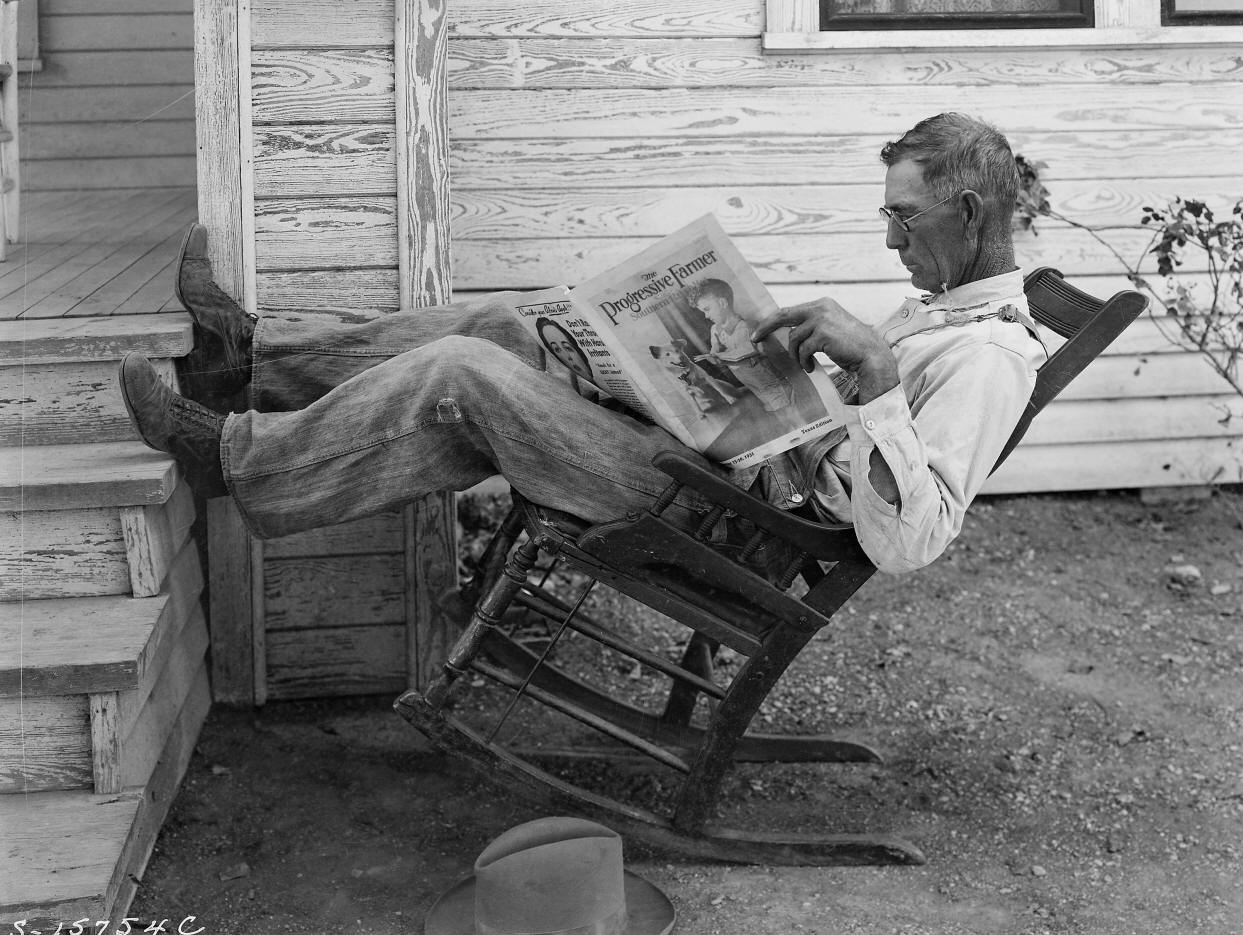
"Farmer reading his farm paper"
Coryell County, Texas,
September 1931.
George W. Ackerman (1884-1962)
1998 print from the original negative.
Records of the Extension Service.
(33-SC-15754c)
https://www.archives.gov/files/press/press-kits/
picturing-the-century-photos/farmer-coryell-county-texas.jpg
Picturing the Century:
One Hundred Years of
Photography from the National Archives
Eight Portfolios from Part I
http://www.archives.gov/press/press-kits/1930-census-photos/
http://www.archives.gov/press/press-kits/picturing-the-century.html#ackerman
media UK
https://www.reuters.com/investigations/
trump-20-maga-aligned-influencers-media-emerge-new-mainstream-2025-11-08/
https://www.theguardian.com/global-development/ng-interactive/2025/may/03/
a-cocktail-for-a-misinformed-world-
why-china-and-russia-are-cheering-trumps-attacks-on-us-media
mainstream media
UK
https://www.theguardian.com/commentisfree/2021/dec/09/
whats-really-wrong-mainstream-media
right-wing media USA
https://www.npr.org/2025/11/15/
nx-s1-5608227/epstein-emails-qanon-influencers
mainstream UK
https://www.reuters.com/investigations/
trump-20-maga-aligned-influencers-media-emerge-new-mainstream-2025-11-08/
means of communication
UK
https://www.theguardian.com/commentisfree/2025/nov/14/
climate-crisis-communication-super-rich
media landscape UK
https://www.reuters.com/investigations/
trump-20-maga-aligned-influencers-media-emerge-new-mainstream-2025-11-08/
media outlets / news organizations > NPR, CNN, Reuters, the AP
USA
https://www.npr.org/2025/09/01/
nx-s1-5521944/news-outlets-call-for-safety-of-journalists-covering-the-war-in-gaza
Black-owned media
outlets > The Root USA
https://www.theroot.com/
https://www.npr.org/2025/10/08/
nx-s1-5562559/the-root-ashley-allison-black-media
the media + Vs
UK
https://www.theguardian.com/commentisfree/2022/dec/23/
media-damns-striking-nurses-ambulance-staff-enemy-miners
mainstream media
USA
https://www.npr.org/2022/08/07/
1115949410/republicans-have-long-feuded-with-the-mainstream-media-
now-many-are-shutting-the
https://www.nytimes.com/2021/01/07/
us/politics/trump-allies-congress.html
pro-Trump media
USA
https://www.nytimes.com/2021/01/07/
us/politics/trump-allies-congress.html
news media
USA
https://www.nytimes.com/2021/01/07/
us/politics/trump-allies-congress.html
news deserts USA
https://www.npr.org/2023/04/10/
1169014791/news-us-newspaper-latest-gannet-media
BBC UK
https://www.theguardian.com/media/
bbc
https://www.theguardian.com/news/audio/2022/jan/21/
the-fight-for-the-future-of-the-bbc
press USA
https://www.npr.org/2018/08/04/
635461307/opinion-
calling-the-press-the-enemy-of-the-people-is-a-menacing-move
press freedom
https://www.npr.org/2023/08/14/
1193676139/newspaper-marion-county-kansas-police-raid-first-amendment
journalism UK
https://www.theguardian.com/culture/2024/apr/13/
journalism-movies-civil-war-scoop
https://www.theguardian.com/film/2023/mar/04/
streaming-the-best-films-about-journalism-she-said
https://www.theguardian.com/books/2022/oct/23/
neal-ascherson-at-90-journalism-interview
https://www.theguardian.com/media/2016/jul/12/
how-technology-disrupted-the-truth
journalism USA
https://www.npr.org/2025/01/04/
nx-s1-5246011/influencer
https://www.npr.org/2024/03/07/
1234374134/news-industry-layoffs-
education-journalism-school-syracuse-columbia-cuny
https://www.nytimes.com/2014/12/07/
opinion/sunday/ross-douthat-what-the-fate-of-the-new-republic-reveals.html
https://www.nytimes.com/2014/10/27/
business/media/how-facebook-is-changing-the-way-its-users-consume-journalism.html
USA > women in journalism UK
/ USA
https://www.theguardian.com/books/2023/may/31/
undaunted-brooke-kroeger-book-women-journalism
https://www.nytimes.com/2023/05/13/
books/review/undaunted-brooke-kroeger.html
journalism books UK
https://www.theguardian.com/books/
journalism
data-driven journalism
USA
https://www.nytimes.com/2023/11/08/
business/media/philip-meyer-dead.html
environmental journalism
UK
https://www.theguardian.com/news/audio/2019/jun/21/
on-the-frontline-why-has-environmental-journalism-become-so-dangerous
checkbook journalism
USA
http://www.nytimes.com/2011/08/07/
sunday-review/paying-for-news-its-nothing-new.html
“cinematic” journalism
USA
https://www.propublica.org/article/
patrick-radden-keefe-interview - July 18, 2022
yellow journalism
USA
http://www.nytimes.com/2011/08/07/
sunday-review/paying-for-news-its-nothing-new.html
yellow press > fake news UK
https://www.bbc.co.uk/programmes/
b08fgw6p - 25 February 2017
overhyped USA
https://www.nytimes.com/2020/03/18/
us/politics/coronavirus-doubters-falwell-drew.html
New Journalism UK
http://www.theguardian.com/books/2014/may/24/
norman-mailer-fire-moon-book-landings
investigate
USA
https://www.npr.org/2023/08/14/
1193813087/kansas-newspaper-raid-police-chief-investigation
report
USA
https://www.propublica.org/article/
building-trust-after-hermits-peak-calf-canyon-fire - March 25, 2024
https://www.propublica.org/article/
milwaukee-fire-brunner-belen-landlord-tenant - November 16, 2022
reporting USA
https://www.propublica.org/article/
milwaukee-fire-brunner-belen-landlord-tenant - November 16, 2022
hard-hitting reporting
USA
https://www.npr.org/2023/08/19/
1194780239/kansas-paper-raid-marion-profile-local-journalism
public-interest reporting
UK
https://www.theguardian.com/media/2016/jul/12/
how-technology-disrupted-the-truth
reportage UK
http://www.theguardian.com/books/2014/may/24/
norman-mailer-fire-moon-book-landings
report
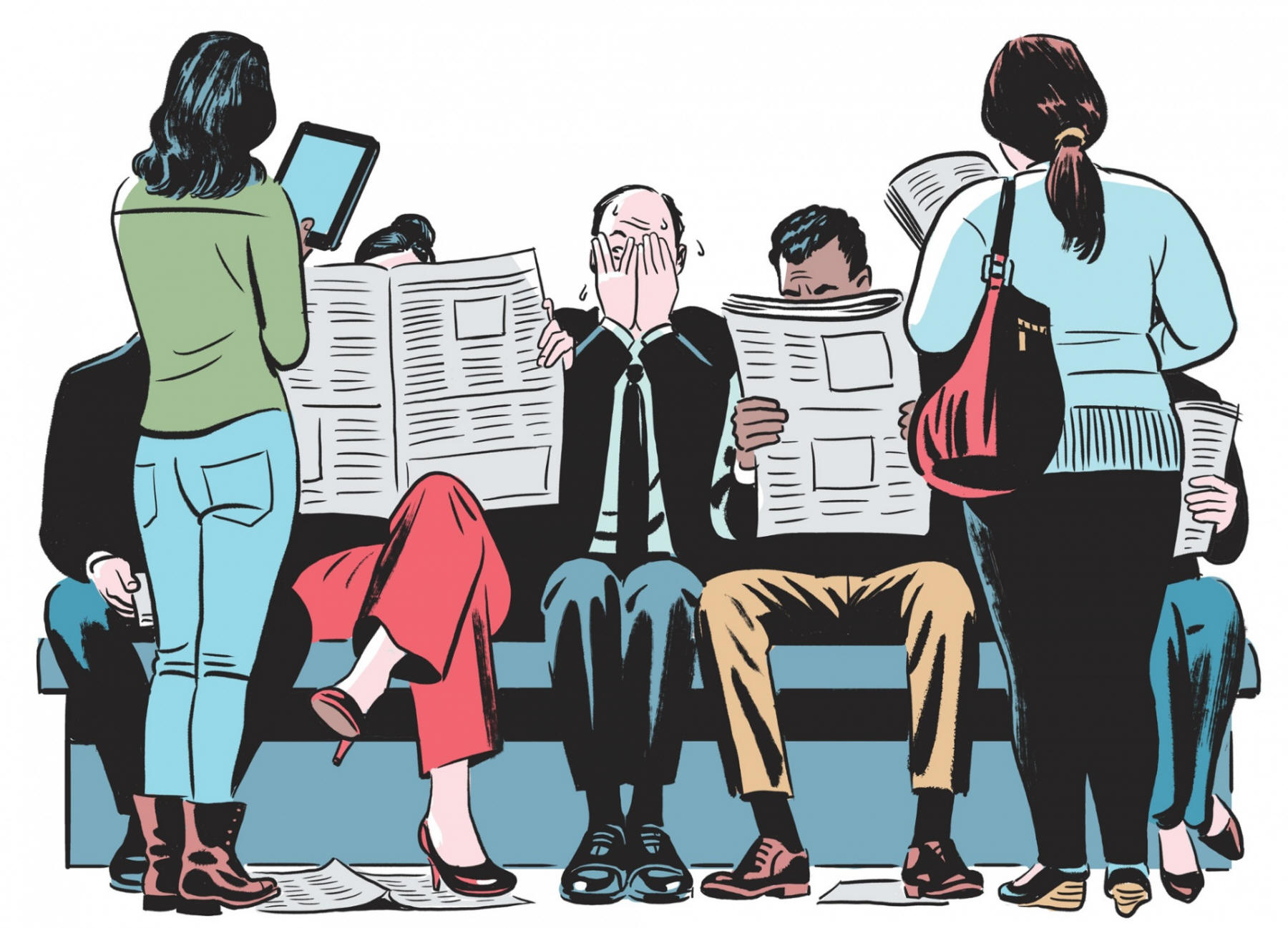
Illustration: R Kikuo Johnson
Media blackout:
would I be happier if I didn't read the
news?
G
Saturday 14
March 2015 09.00 GMT
https://www.theguardian.com/media/2015/mar/14/
would-i-be-happier-if-i-didnt-read-the-news
publish
USA
https://www.nytimes.com/2016/09/03/
arts/music/fred-hellerman-last-of-the-weavers-folk-group-dies-at-89.html
publishing
quality press UK
https://www.theguardian.com/media/2011/jul/13/
deborah-orr-news-of-the-world
news
https://www.bbc.com/news
the news + V3d
person singular


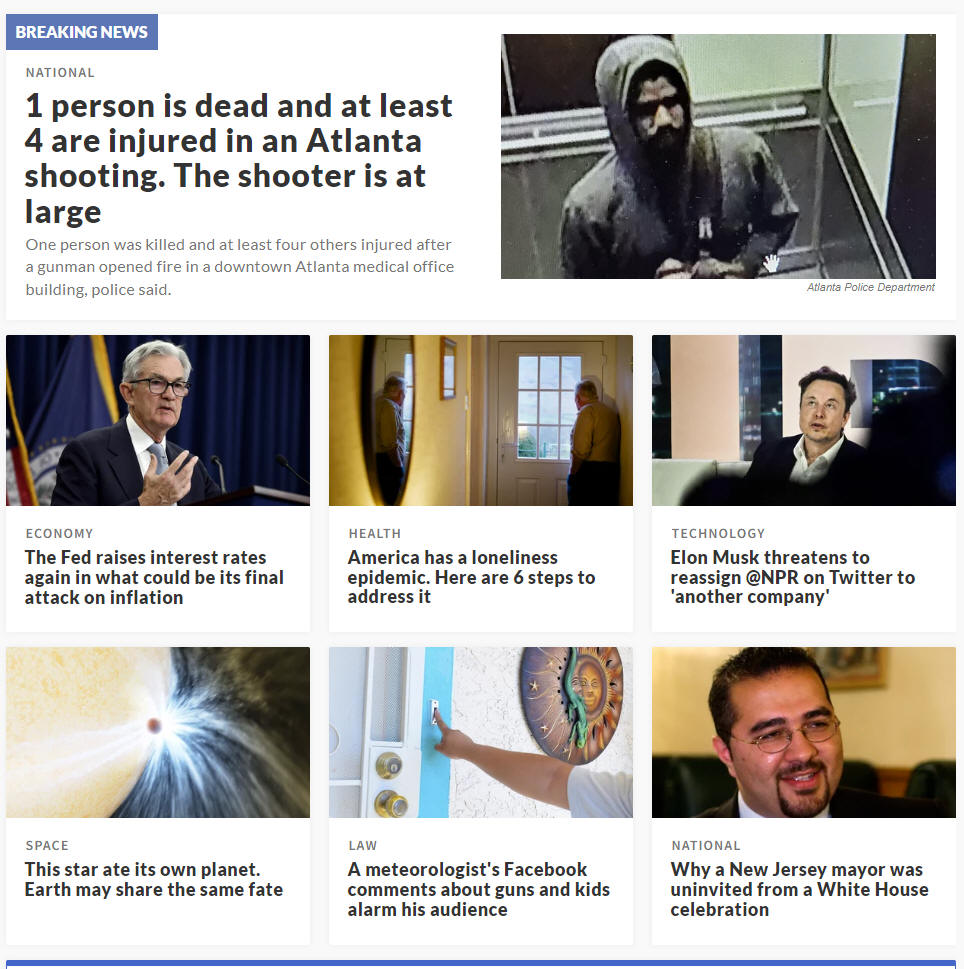
breaking news
fact check USA
https://www.npr.org/sections/
politics-fact-check
fact-checking USA
https://www.npr.org/2020/03/21/
818932167/fact-checking-
5-trump-administration-claims-on-the-coronavirus-pandemic
control of news USA
https://www.nytimes.com/2016/05/28/
business/media/behind-the-scenes-billionaires-growing-control-of-news.html
newspapers UK
https://www.theguardian.com/media/
national-newspapers
https://www.theguardian.com/media/
newspapers
http://www.theguardian.com/media/2015/apr/10/
national-daily-newspapers-lose-more-than-half-a-million-readers-
in-past-year
http://www.guardian.co.uk/media/2012/dec/25/
looking-beyond-uk-save-british-newspapers
http://www.guardian.co.uk/media/2012/apr/26/
rupert-murdoch-predicts-newspapers-may-die
http://www.guardian.co.uk/artanddesign/2010/dec/23/
design-save-media-newspapers
newspaper of the year UK
http://www.theguardian.com/media/2006/may/16/
theguardian.pressandpublishing1
podcasts > before
2024
newspaper
USA
https://www.npr.org/2024/11/17/
nx-s1-5191672/ajc-atlanta-georgia-newspaper-strategy-andrew-morse
https://www.npr.org/2024/06/12/
nx-s1-4947579/prison-newspapers-growth-journalism-inmates
https://www.npr.org/2023/10/01/
1202878100/police-chief-who-led-raid-kansas-newspaper-suspended
https://www.npr.org/2023/08/19/
1194780239/kansas-paper-raid-marion-profile-local-journalism
https://www.npr.org/2023/08/14/
1193813087/kansas-newspaper-raid-police-chief-investigation
https://www.npr.org/2023/04/10/
1169014791/news-us-newspaper-latest-gannet-media
https://www.npr.org/2022/12/29/
1143410955/newspaper-alabama-digital-journalism-birmingham-huntsville-mobile
https://www.nytimes.com/2019/12/21/
reader-center/local-news-deserts.html
http://www.npr.org/2017/07/01/
534697865/how-small-town-papers-have-kept-community-trust
http://www.npr.org/sections/thetwo-way/2016/12/27/
507140760/big-newspapers-are-booming-washington-post-to-add-sixty-newsroom-jobs
https://www.nytimes.com/2012/05/25/
business/media/in-latest-sign-of-print-upheaval-new-orleans-paper-scaling-back.html
https://www.nola.com/news/business/
new-digitally-focused-company-launches-this-fall-
with-beefed-up-online-coverage-the-times-picayune/
article_c53e41b7-042d-5e05-bc34-6394d68928db.html#incart_river
newspaper company
USA
https://www.npr.org/2023/04/10/
1169014791/news-us-newspaper-latest-gannet-media
1980s > local free newspaper > the Kingston Guardian,
in south-west London.
UK
https://www.theguardian.com/lifeandstyle/2021/nov/03/
a-moment-that-changed-me-
how-a-death-knock-taught-me-about-grief-respect-and-truth
prison newspaper
Soul USA
Soul told Black musicians’ stories.
Its archives are going diigital.
The newspaper,
which started in 1966 with a focus on R&B, funk and disco,
shut down in 1982.
But one of its founders’ grandsons
is devoted to finding it a new online audience.
https://www.nytimes.com/2023/02/08/
arts/music/soul-newspaper.html
https://www.nytimes.com/2023/02/08/
arts/music/soul-newspaper.html
print edition USA
https://www.npr.org/2022/12/29/
1143410955/newspaper-alabama-digital-journalism-birmingham-huntsville-mobile
papers > disappear USA
https://www.npr.org/2022/12/29/
1143410955/newspaper-alabama-digital-journalism-birmingham-huntsville-mobile
print-to-digital USA
https://www.npr.org/2022/12/29/
1143410955/newspaper-alabama-digital-journalism-birmingham-huntsville-mobile
digital publications
USA
https://www.npr.org/2022/12/29/
1143410955/newspaper-alabama-digital-journalism-birmingham-huntsville-mobile
distribution method
USA
https://www.npr.org/2022/12/29/
1143410955/newspaper-alabama-digital-journalism-birmingham-huntsville-mobile
newspaperman
USA
https://www.npr.org/2022/12/29/
1143410955/newspaper-alabama-digital-journalism-birmingham-huntsville-mobile
https://www.nytimes.com/2021/02/19/
nyregion/jack-schwartz-dead-coronavirus.html
deskman
USA
https://www.nytimes.com/2021/02/19/
nyregion/jack-schwartz-dead-coronavirus.html
weekly, weeklies
USA
http://www.nytimes.com/2014/03/05/
opinion/are-alt-weeklies-over.html
USA > black press UK / USA
the black press is not what it used to be.
At their height during the Great Migration decades
between 1915
and 1970, dozens of weeklies
— including The New York Amsterdam News,
The Pittsburgh Courier and The Los Angeles Sentinel —
reported the news of black America.
The Chicago Defender,
unofficial organ of the migration,
had a national circulation of 130,000.
Everything that was fit to print,
from the latest racial pogroms
to Negro League baseball box
scores,
filled its pages, giving voice to the voiceless
along the color line of American political and social life.
In 2000, Vernon Jarrett,
a longtime Chicago Defender reporter
and a syndicated columnist
at The Chicago Tribune,
described black newspapers as
“the most predominant
media
influence on black people. . . .
They were our Internet.”
http://www.nytimes.com/2015/04/05/books/review/05bkr-muhammad.t.html
http://www.nytimes.com/2015/04/05/
books/review/05bkr-muhammad.t.html
USA > black newspapers > The Chicago Defender
UK / USA
https://www.theguardian.com/us-news/2021/dec/18/
how-ida-b-wells-became-the-last-hope-for-12-wrongly-convicted-black-men
https://www.nytimes.com/2019/07/09/
us/chicago-defender-newspaper.html
black newspapers > Muhammad Speaks
was one of the most widely read newspapers
ever produced by an African-American organization.
It was the official newspaper of the Nation of Islam
from 1960 to 1975,
founded by a group of Elijah Muhammad's ministers,
including Malcolm X.
After Elijah Muhammad's death in 1975,
it was renamed several times
after Warith Deen Mohammed
moved the Nation of Islam
into mainstream Sunni Islam,
culminating in The Muslim Journal.
A number of rival journals were also published,
including The Final Call under Louis Farrakhan,
claiming to continue the message of the original.
- Wikipedia, 25 June 2023
https://en.wikipedia.org/wiki/
Muhammad_Speaks
1898
Wilmington massacre USA
On Nov. 10, 1898,
a mob descended on the offices of The Daily Record,
a Black-owned newspaper in
Wilmington, N.C.
The armed men then moved into the streets
and opened fire as Black men fled for their lives.
Finally, the rabble seized control
of the racially mixed city government.
It expelled Black aldermen, installed unelected whites
belonging to the then-segregationist Democratic Party
and published a "White Declaration of Independence."
Historians have called it a coup d'etat.
The number of people who died
ranges from about 60 to as many as 250,
according to some estimates.
https://www.npr.org/2021/11/10/
1053562371/1898-wilmington-coup-massacre
Boston’s 19th century abolitionist newspapers
William Lloyd Garrison’s
legendary The Liberator
The Emancipator,
which for a time during the 19th century
was the newspaper
of the American Anti-Slavery
Society.
https://www.nytimes.com/2021/03/21/
business/media/boston-globe-ibram-kendi.html
alternative newspaper > The Aquarian Weekly
USA
http://www.nytimes.com/2013/11/27/nyregion/
james-rensenbrink-whose-alternative-newspaper-endured-dies-at-81.html
Covering the
counterculture: the 60s underground press
– in pictures
UK
https://www.theguardian.com/media/gallery/2017/sep/23/
covering-the-counterculture-the-60s-underground-press-
in-pictures - Guardian picture gallery
underground / counter-culture paper
International Times,
The Magazine of Resistance
https://internationaltimes.it/
http://www.guardian.co.uk/media/organgrinder/2009/jul/17/
international-times-underground-newspaper
http://www.guardian.co.uk/media/gallery/2009/jul/15/
international-times-magazine
free city newspaper
USA
http://www.nytimes.com/2013/07/19/
business/media/tony-metcalf-editor-of-free-city-newspapers-dies-at-50.html
daily newspaper / daily UK
http://www.theguardian.com/media/2015/apr/10/
national-daily-newspapers-lose-more-than-half-a-million-readers-in-past-year
http://www.guardian.co.uk/media/greenslade/2010/oct/26/
theindependent-alexander-lebedev
http://www.guardian.co.uk/media/2010/oct/18/
independent-new-newspaper-i
daily newspapers
USA
https://www.npr.org/2022/12/29/
1143410955/newspaper-alabama-digital-journalism-birmingham-huntsville-mobile
newspaper man
USA
https://www.nytimes.com/2010/02/23/
nyregion/23wieghart.html

Newsstand in the 34th Street Station
‘A dear friend of mine scheduled couriers for
DHL.
From time to time he would ring and ask
if I wanted to catch the next red-eye
flight to New York.
I always said yes’
Photograph: Janet Delaney
Courtesy the artist and MACK
No sleep till
Brooklyn:
a red-eye view of New York – in pictures
Janet Delaney’s
life in California was punctuated
by last-minute
flights she would take to NYC as a courier
– where she’d cast
a sleepy gaze across the city
G
Thu 21 Oct 2021
07.00 BST
https://www.theguardian.com/artanddesign/gallery/2021/oct/21/
no-sleep-till-brooklyn-a-red-eye-view-of-new-york-in-pictures
newsstand
newspaper stand / newsstands
UK
http://www.guardian.co.uk/media/2011/apr/14/
david-sullivan-sunday-sport
local newspaper / journalism UK
https://www.theguardian.com/commentisfree/2009/nov/09/
local-newspapers-democracy
local / smaller newspapers
USA
https://www.propublica.org/article/
local-newspaper-legacy-springfield-massachusetts - October 14, 2023
cartoons > Cagle > Dying Newspapers
USA
2009
http://www.cagle.msnbc.com/news/DyingNewspapers/main.asp
royal journals
UK
https://www.theguardian.com/media/2006/feb/22/
pressandpublishing.themonarchy1
freesheets
UK
https://www.theguardian.com/media/2006/aug/31/
pressandpublishing.citynews
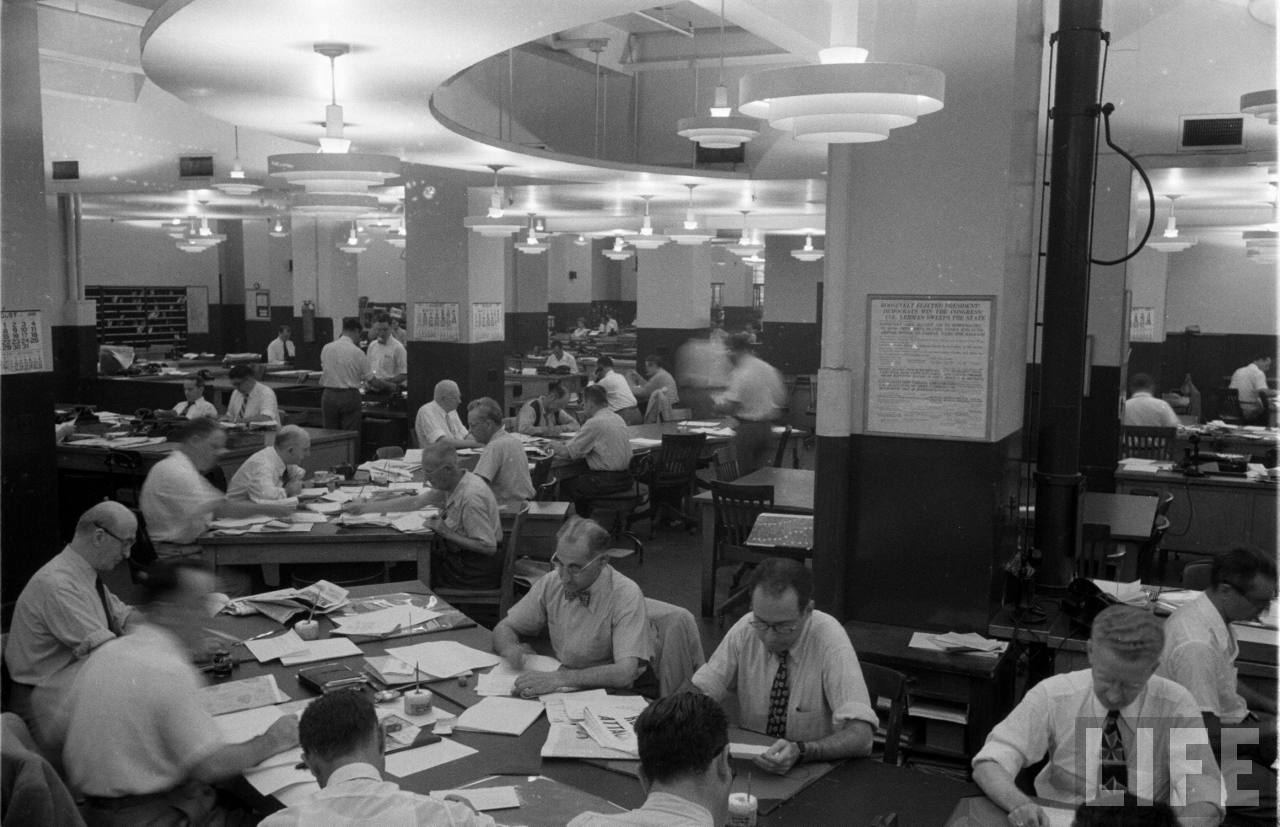
New York Times
Photograph: Eisie
Undated
Life Images
newsroom USA
https://www.npr.org/2023/08/14/
1193676139/newspaper-marion-county-kansas-police-raid-first-amendment
https://www.nytimes.com/2023/04/29/
opinion/journalism-newsroom.html
newsreader > Peter Sissons
UK
https://www.theguardian.com/media/2009/jun/12/
peter-sissons-retires-bbc
paper
newspaper printing process USA
https://www.nytimes.com/2019/03/26/
magazine/daily-miracle-times-print-plant-college-point.html
plates
USA
Finished
newspaper pages are sent
digitally
from the
newsroom to the plant
and
burned with lasers onto
thin aluminum sheets
called plates.
A
pressman
(...)
bends
each plate around a press cylinder.
https://www.nytimes.com/2019/03/26/
magazine/daily-miracle-times-print-plant-college-point.html
https://en.wikipedia.org/wiki/
Newspaper_production_process
https://www.nytimes.com/2021/01/17/
insider/front-page-press-plates.html
printed paper
stop the presses for N
USA
https://www.npr.org/2022/12/29/
1143410955/newspaper-alabama-
digital-journalism-birmingham-huntsville-mobile
physical newspaper
paper-thin TV screen
UK
https://www.theguardian.com/technology/2005/oct/13/
news.newmedia
silicon
UK
https://www.theguardian.com/media/2005/oct/28/
newmedia.microsoft
London Press Club
https://londonpressclub.co.uk/
scoop USA
https://www.nytimes.com/2021/01/15/
insider/neil-sheehan-pentagon-papers.html
scoop of the year
UK
https://www.theguardian.com/media/2006/may/16/
theguardian.pressandpublishing1
infographics
UK
https://www.theguardian.com/guardian-masterclasses/
data-visualisation
visual journalism > ProPublica
USA
https://www.propublica.org/article/
year-in-visual-journalism-2022
item
background
cuttings > Edda Tasiemka's cuttings library
UK
http://www.theguardian.com/media/2005/mar/13/
pressandpublishing.observerreview
On sale at your newsagent now!
newspaper stand
newspaper empire
hoax
USA
https://www.nytimes.com/2013/01/14/
us/eugene-c-patterson-editor-and-civil-rights-crusader-dies-at-89.html
morning paper
broadsheet
UK
https://www.theguardian.com/media/2012/oct/16/
unleashing-g2-2-years-ago
https://www.theguardian.com/media/2003/oct/20/
pressandpublishing.bookextracts
broadsheet version
size
format
tabloid
UK / USA
http://www.nytimes.com/2011/07/20/opinion/20linkof.html
http://www.nytimes.com/2011/07/17/world/europe/17police.html
https://www.theguardian.com/media/2005/aug/27/
broadcasting.uknews1
UK > tabloid > Daily Sport and Sunday Sport
UK
https://www.guardian.co.uk/media/2011/apr/14/
david-sullivan-sunday-sport
https://www.guardian.co.uk/media/2011/apr/01/
daily-sport-ceases-publication
https://www.guardian.co.uk/media/2009/jan/07/
sport-media-group-breaks-banking-covenants
read
flip
through
The Village Voice USA
https://www.npr.org/sections/thetwo-way/2017/08/23/
545538194/-village-voice-legendary-new-york-weekly-ending-its-print-edition
reader
UK
https://www.theguardian.com/media/2012/dec/25/
looking-beyond-uk-save-british-newspapers
readership
post record readership figures
circulation
UK
https://www.theguardian.com/media/2015/apr/10/
national-daily-newspapers-lose-more-than-half-a-million-readers-in-past-year
distribution
USA
https://www.npr.org/sections/thetwo-way/2017/08/23/
545538194/-village-voice-legendary-new-york-weekly-ending-its-print-edition
plummet
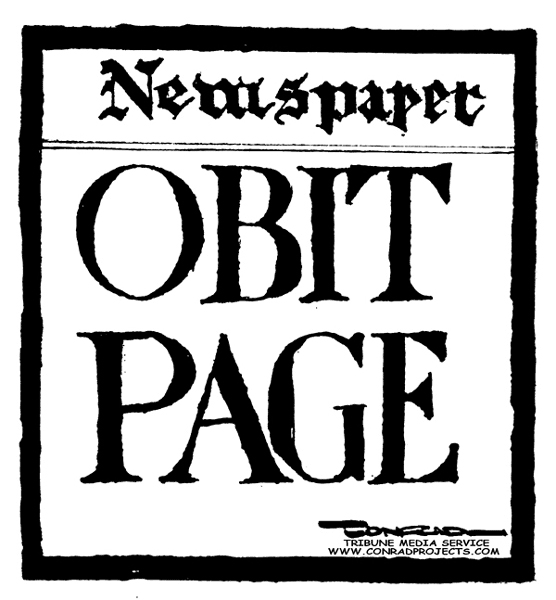
Paul Conrad
cartoon
The Los Angeles Times Syndicate
California
Cagle
18 March 2009
issue
special issue
pullout
appointments
obituary
UK
https://www.theguardian.com/tone/
obituaries
https://www.theguardian.com/culture/series/
the-observers-obituaries-of-2022
https://www.theguardian.com/theobserver/series/
obituaries-of-2012
obituary
USA
https://www.npr.org/sections/obituaries/
https://www.nytimes.com/section/obituaries
https://www.nytimes.com/interactive/projects/cp/obituaries/archives
https://www.nytimes.com/spotlight/overlooked
https://www.nytimes.com/interactive/2018/
obituaries/overlooked.html
https://www.nytimes.com/2018/03/08/
obituaries/overlooked-from-the-death-desk-
why-most-obits-are-still-of-white-men.html
http://www.nytimes.com/2015/10/08/
insider/when-death-comes-and-the-obituary-quickly-follows.html
http://www.nytimes.com/2012/04/15/
opinion/sunday/someone-dies-but-that-is-only-the-beginning.html
podcast > NYT >
Insider Podcasts USA
The Last Word:
Inside
the Times’ Obits Department April 27, 2016
http://www.nytimes.com/2016/04/28/
insider/the-last-word-inside-the-times-obits-department.html
agony aunt
UK
http://www.theguardian.com/media/2014/apr/02/
deirdre-saunders-heavyweight-job-agony-aunt
http://www.guardian.co.uk/lifeandstyle/2009/nov/13/
agony-aunts
country diarist UK
http://www.theguardian.com/uk/2001/feb/26/
footandmouth.johnvidal
advertisement / ad
classified
crossword
UK
https://www.theguardian.com/crossword
https://www.theguardian.com/crosswords
https://www.theguardian.com/crosswords/series/cryptic
https://www.theguardian.com/crosswords/series/quick
https://www.theguardian.com/crosswords/series/speedy
https://www.theguardian.com/crosswords/series/weekend-crossword
https://www.theguardian.com/world/2004/dec/06/
gender.sandybalfour
crossword setter
crossword solver
poser
newspaper article
article
USA
https://www.theguardian.com/us-news/2020/mar/27/
trump-coronavirus-back-to-work-column
article
USA
https://www.nytimes.com/2015/03/23/
business/media/rolling-stone-to-publish-review-of-disputed-rape-article.html
https://www.nytimes.com/2014/02/17/
nyregion/polk-awards-honor-articles-on-nsa-surveillance.html
story
UK
http://www.guardian.co.uk/lifeandstyle/2011/aug/30/
back-work-summer-news
http://www.guardian.co.uk/media/2009/apr/01/
guardian-twitter-media-technology
lead story
top stories
story
USA
https://www.npr.org/2024/06/07/
nx-s1-4995105/washington-post-will-lewis-tries-to-kill-story-buzbee
https://www.npr.org/sections/goatsandsoda/2019/12/31/
792409369/reporters-pick-their-favorite-global-stories-of-the-decade
animal stories
USA
https://www.npr.org/2024/12/18/
nx-s1-5226617/top-animal-stories-npr-2024
run a story
USA
https://www.npr.org/sections/goatsandsoda/2021/03/24/
980838151/gun-violence-deaths-how-the-u-s-compares-to-the-rest-of-the-world
kill a story
USA
https://www.npr.org/2024/06/07/
nx-s1-4995105/washington-post-will-lewis-tries-to-kill-story-buzbee
climate change stories
UK
http://www.theguardian.com/environment/2006/aug/03/
greenpolitics.pressandpublishing
backstory
UK
http://www.theguardian.com/world/2006/jul/22/afghanistan.
topstories3
a piece USA
https://www.theguardian.com/us-news/2020/mar/27/
trump-coronavirus-back-to-work-column
http://www.npr.org/2016/04/24/
475432149/could-you-come-up-with-400-if-disaster-struck
pieces of journalism
USA
https://www.nytimes.com/2016/09/03/
arts/music/fred-hellerman-last-of-the-weavers-folk-group-dies-at-89.html
clippings UK
https://www.theguardian.com/lifeandstyle/2021/nov/03/
a-moment-that-changed-me-
how-a-death-knock-taught-me-about-grief-respect-and-truth
head
latest
latest financial news
get media attention
USA
https://www.npr.org/sections/codeswitch/2016/07/26/
487328350/who-is-delrawn-small-
why-some-police-shootings-get-little-media-attention
cover UK
https://www.theguardian.com/news/audio/2022/dec/23/l
ooking-back-at-2022
cover USA
https://www.npr.org/2022/06/14/
1104287546/mass-shooting-uvalde-buffalo-tulsa-guns-media
https://www.npr.org/2022/06/10/
1104291186/how-media-should-cover-gun-violence
https://www.npr.org/2022/05/27/
1101837117/how-the-media-can-cover-mass-shootings-
while-respecting-space-for-grief
http://www.nytimes.com/2016/06/30/
insider/repeating-a-delicate-reporting-routine-after-four-mass-shootings.html
http://www.npr.org/2015/12/13/
459574441/how-should-the-media-cover-donald-trump
coverage
UK
http://www.theguardian.com/commentisfree/2014/mar/23/
mick-jagger-cost-of-fame-hacked-off
http://www.guardian.co.uk/commentisfree/2013/jul/26/
dont-abolish-monarchy-stupefying-coverage
coverage
USA
http://www.npr.org/2017/02/13/
515043661/wall-street-journal-editor-defends-trump-coverage-at-staff-meeting
full news coverage
here are
the latest from N
exclusive
crime story
kiss and tell story / plot
UK
http://www.theguardian.com/media/2006/jul/11/
newsoftheworld.pressandpublishing
pillow talk
topic
spoiler
shocker
scoop
headline-grabbing scoop
leader
comment
sketch
glossy
publish
picture
main picture
caption
clockwise from top left
graphic images
graphic
snatched
paparazzi pictures
columnist
column
UK
https://www.theguardian.com/media/greenslade/2013/jan/18/
julie-burchill-pcc
syndicated
columnist Dear Abby
Pauline Esther Friedman,
familiarly known as Popo USA 1918-2013
California
housewife
who nearly 60 years ago,
seeking something more meaningful
than mah-jongg,
transformed herself
into the syndicated columnist Dear Abby
— and in so doing became a trusted,
tart-tongued adviser to tens of millions —
https://www.nytimes.com/2013/01/18/
business/media/pauline-phillips-flinty-adviser-to-millions-as-dear-abby-
dies-at-94.html
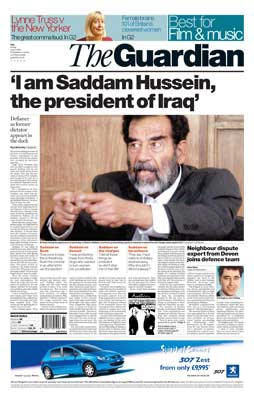
The
Guardian frontpage
2 July 2004
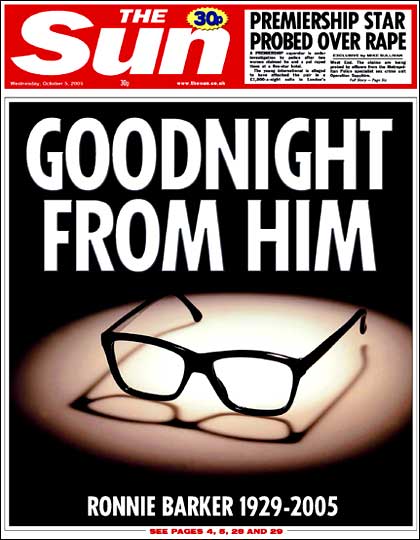
The Sun frontpage
5 October 2005

The Sun frontpage
5 September 2004
paper masthead
frontpage
/ front page UK
https://www.theguardian.com/media/series/
the-front-pages
http://www.theguardian.com/media/2016/apr/27/
times-hillsborough-protest-front-page-twitter
http://www.theguardian.com/football/2016/apr/27/
sun-times-front-pages-ignore-hillsborough-verdict
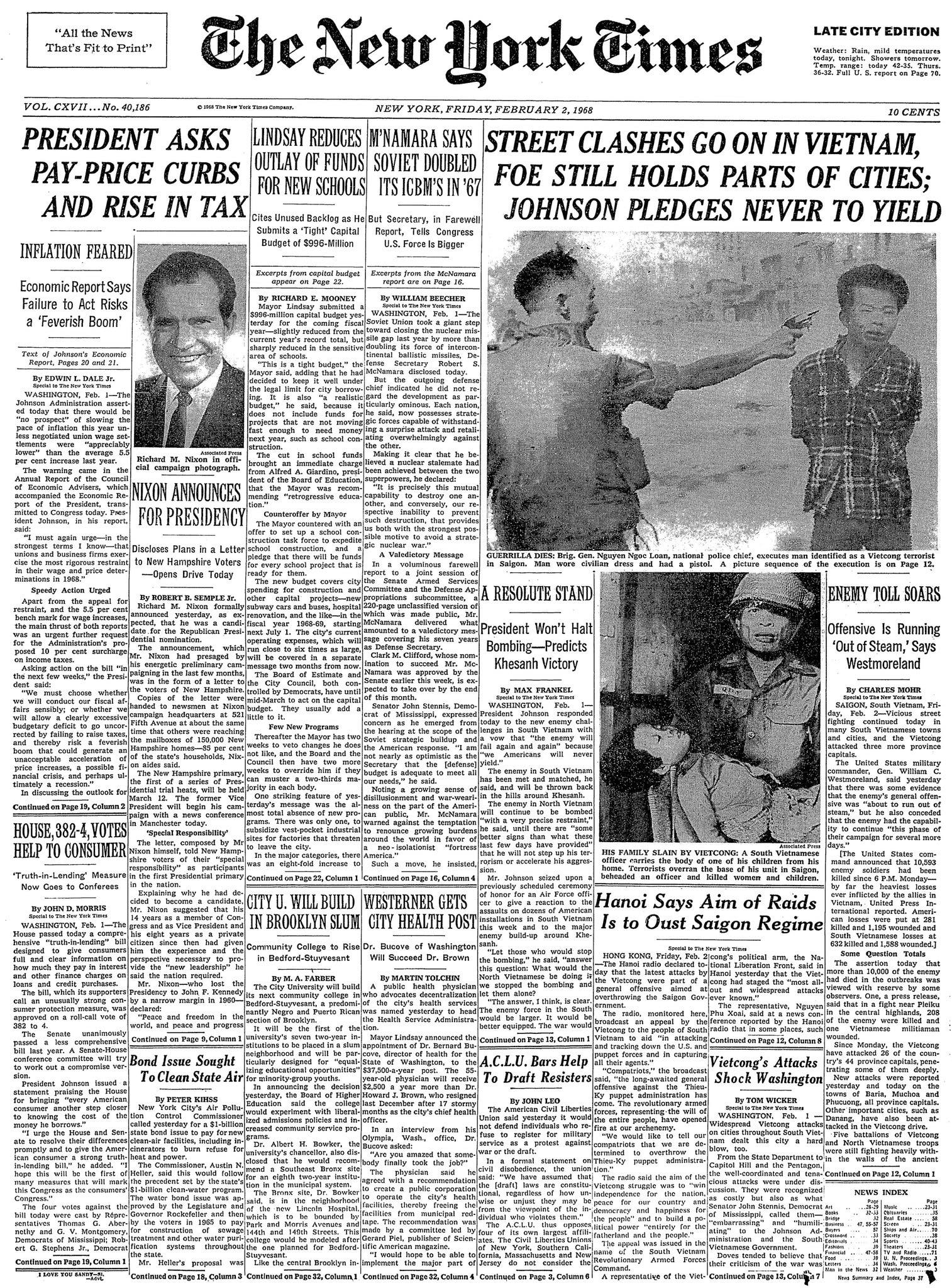
John G. Morris,
Renowned Photo Editor in the Thick of History,
Dies at 100
NYT
July 28, 2017
https://www.nytimes.com/2017/07/28/
business/john-g-morris-renowned-photo-editor-dies-at-100.html
front page
USA
https://www.nytimes.com/2020/05/23/
reader-center/coronavirus-new-york-times-front-page.html
https://www.nytimes.com/2019/12/23/
reader-center/front-page-headlines.html
https://www.nytimes.com/2017/07/28/
business/john-g-morris-renowned-photo-editor-dies-at-100.html
http://www.nytimes.com/2016/06/24/
insider/how-the-brexit-news-made-the-front-page.html
the frontpage of the Daily Telegraph
glamourize
cash in
on N
Newseum
daily newspaper front pages
in their
original, unedited form
https://www.newseum.org/
back page
be laid out
frontpage > headline
UK
https://www.theguardian.com/theguardian/from-the-archive-blog/2012/sep/28/
guardian-front-page-news-1952
frontpage headline
news headlines
grab / hit the
headlines
chase the
headlines
coverage
illustration USA
https://www.nytimes.com/interactive/2022/12/13/
arts/year-in-illustration.html
media
the media +
Vplural
USA
https://www.nytimes.com/2020/04/19/
opinion/trump-coronavirus-briefings.html
media coverage
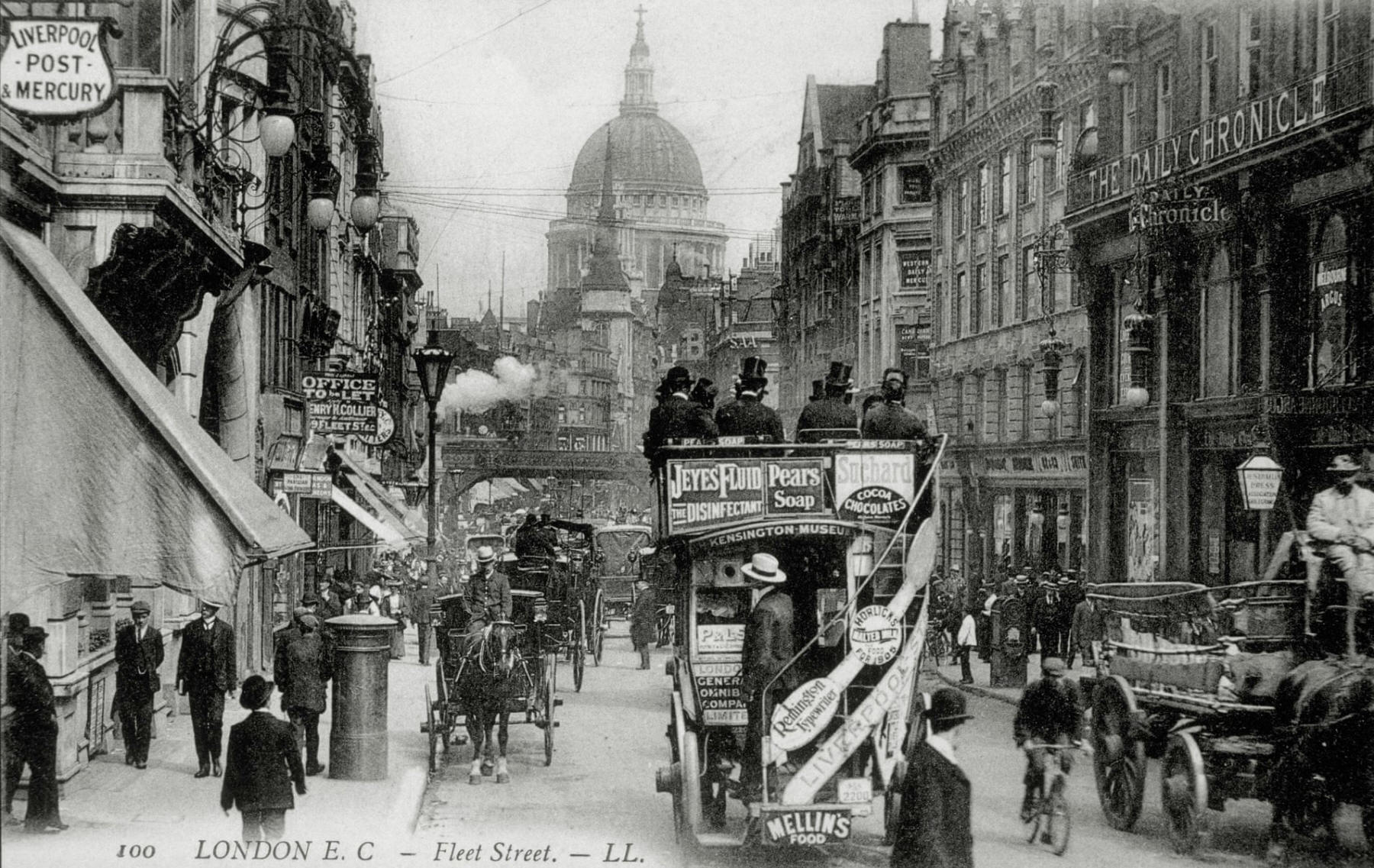
A busy scene circa
1900
looking down towards Ludgate and St Paul’s.
The proximity of
the law courts
on the Strand and the Old Bailey
made Fleet Street a natural hub for news publishers
Photograph: Getty
Images
Exit from Fleet
Street,
spiritual home of
British journalism – in pictures
The last two
journalists still working in London’s Fleet Street
– two reporters on
the Dundee-based Sunday Post –
are leaving it on
Friday,
and the home of
the UK’s newspaper industry is no more
G
Fri 5 Aug 2016 13.47 BST
https://www.theguardian.com/artanddesign/gallery/2016/aug/05/
exit-from-fleet-street-spiritual-home-of-british-journalism-in-pictures
UK > London >
Fleet Street
UK
spiritual home of
British journalism
https://www.theguardian.com/artanddesign/gallery/2016/aug/05/
exit-from-fleet-street-spiritual-home-of-british-journalism-in-pictures
https://www.theguardian.com/politics/2013/apr/13/
fleet-street-margaret-thatcher
https://www.theguardian.com/media/2011/jul/19/
sean-hoare-journalists-tributes-news-of-the-world
http://www.guardian.co.uk/media/2010/may/09/alan-watkins-obituary
http://www.guardian.co.uk/culture/2009/sep/04/keith-waterhouse-dies-billy-liar
http://www.theguardian.com/media/2005/jun/15/pressandpublishing.uknews2
http://www.theguardian.com/media/2004/oct/20/dailymail.pressandpublishing
http://www.theguardian.com/books/2000/jun/24/fiction.books
Reuters
https://en.wikipedia.org/wiki/
Reuters
https://www.theguardian.com/technology/2006/oct/16/
secondlife.web20
Reuters USA
https://www.reuters.com/news/us
Associated Press AP USA
https://www.nytimes.com/section/aponline/news
bulletin
kill
delete
fix
The Daily Telegraph
UK
https://www.theguardian.com/media/
telegraphmediagroup
https://www.theguardian.com/media/2024/mar/29/
telegraph-newspaper-redbird-imi-conservatives-britain
The Economist
https://www.economist.com/
UK > The Financial Times / The FT
UK / USA
https://www.ft.com/
https://www.npr.org/2015/07/24/
425834204/the-financial-times-
a-newspaper-success-story-is-sold-for-1-3-billion
The Times UK
https://www.thetimes.co.uk/
https://www.theguardian.com/politics/article/2024/jul/03/
the-sun-support-labour-general-election
http://www.theguardian.com/media/2016/apr/27/
times-hillsborough-protest-front-page-twitter
http://www.theguardian.com/football/2016/apr/27/
sun-times-front-pages-ignore-hillsborough-verdict
The Irish Times > Archives
The Digital archive contains exact reproductions
of all articles published by
the Irish Times from 1859 onwards
https://www.irishtimes.com/
archive
https://en.wikipedia.org/wiki/
The_Irish_Times
UK > The Independent
UK / USA
https://www.independent.co.uk/
https://www.npr.org/2016/03/23/
471299638/whither-bridget-jones-
britains-independent-newspaper-goes-digital
http://www.guardian.co.uk/media/2008/dec/01/
independent-daily-mail-office
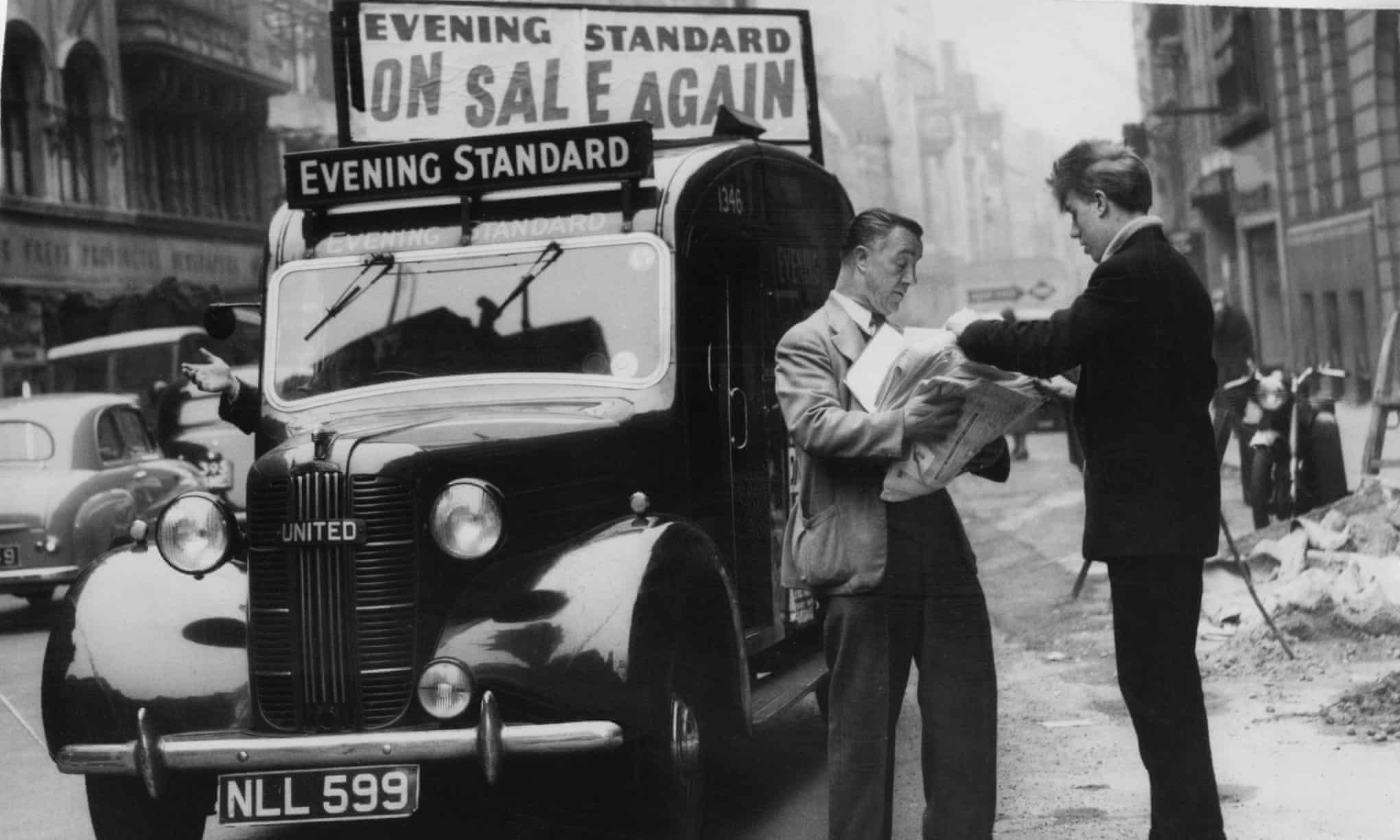
A vendor receiving
deliveries of the Evening Standard
as printing
resumed after a strike on Fleet Street, 1955.
Photograph: Terry
Fincher
Getty Images
The Standard in crisis:
read all about it,
but for how much longer?
G
Sun 31 Oct 2021
10.00 GMT
https://www.theguardian.com/media/2021/oct/31/
the-standard-in-crisis-read-all-about-it-but-for-how-much-longer
The London Evening Standard / The Evening Standard
UK
https://www.theguardian.com/media/
london-evening-standard
https://en.wikipedia.org/wiki/
Evening_Standard
https://www.theguardian.com/media/2021/oct/31/
the-standard-in-crisis-read-all-about-it-but-for-how-much-longer
http://www.guardian.co.uk/media/greenslade/2009/may/04/
london-evening-standard-alexander-lebedev
The Daily Mail UK
https://www.theguardian.com/media/
dailymail
https://www.theguardian.com/media/2017/may/14/
is-paul-dacre-most-dangerous-man-in-britain-daily-mail
https://www.theguardian.com/culture/2003/sep/11/
2
The Scotsman > Digital archive UK
Every issue of
The Scotsman
from 1817-1950
https://britishnewspaperarchive.co.uk/titles/
the-scotsman
street paper > The Big Issue
UK
https://www.theguardian.com/society/2009/sep/18/
big-issue-18-birthday
https://www.theguardian.com/society/2006/oct/05/
communities.uk
The Baltimore Sun
USA
https://www.npr.org/2024/02/26/
1233856063/baltimore-sun-new-owner-david-smith-sinclair
The Denver Post
USA
https://www.nytimes.com/2009/03/02/
business/media/02denver.html
The Hartford Courant
USA
http://www.nytimes.com/2014/10/27/
business/media/for-the-hartford-courant-250-years-in-print.html
Kansas > The Marion County Record
USA
https://www.npr.org/2023/08/19/
1194780239/kansas-paper-raid-marion-profile-local-journalism
https://www.npr.org/2023/08/14/
1193813087/kansas-newspaper-raid-police-chief-investigation
Women’s Wear Daily
USA
http://www.nytimes.com/2015/02/28/
business/media/john-fairchild-editor-of-womens-wear-daily-dies-at-87.html
The Post and Courier,
the newspaper in Charleston, S.C. USA
http://www.npr.org/2015/07/04/
419883181/charleston-reporters-tell-the-national-story-of-local-violence
The Rocky Mountain News Denver, Colorado USA
1859-2009
https://www.nytimes.com/2009/03/02/
business/media/02denver.html
http://www.nytimes.com/2009/02/28/us/28rocky.html
El Nuevo Herald
USA
http://www.nytimes.com/2010/07/11/
business/media/11suarez.htm
The New York World-Telegram
USA
The
collection includes
an
estimated 1 million photographs
that the
New York World-Telegram & Sun Newspaper
assembled between the 1890s and 1967
(chiefly
1920 to 1967),
the year
in which the newspaper closed.
https://www.loc.gov/rr/print/coll/130_nyw.html
https://www.loc.gov/rr/print/coll/130_nyw.html
https://www.loc.gov/pictures/item/94505083/
https://www.nytimes.com/2014/04/05/
world/curtis-bill-pepper-reporter-and-traveler-is-dead-at-96.html
The Los Angeles Times
USA
https://www.npr.org/2024/05/01/
1248086703/louis-sahagun-la-times-california-news
https://www.npr.org/2023/06/07/
1180808470/los-angeles-times-layoffs
https://www.nytimes.com/2015/06/15/
business/media/
john-carroll-former-editor-of-los-angeles-times-dies-at-73.html
USA >
New York Times UK / USA
https://www.nytimes.com/topic/organization/
the-new-york-times
https://www.nytimes.com/spotlight/2022-
pulitzer-airstrikes-gone-wrong
https://www.npr.org/2022/05/08/
1097097620/new-york-times-pulitzer-ukraine-walter-duranty
https://www.npr.org/2020/12/18/
944594193/new-york-times-retracts-
hit-podcast-series-caliphate-on-isis-executioner
https://www.nytimes.com/2018/06/27/
technology/personaltech/newsroom-technology-evolved-40-years.html
https://www.nytimes.com/interactive/2018/01/01/
opinion/Arthur-Gregg-Sulzberger-The-New-York-Times.html
https://www.nytimes.com/2017/06/15/
insider/1967-a-modern-identity-takes-form-in-ancient-lettering.html
http://www.nytimes.com/2015/09/12/insider/
1896-without-fear-or-favor.html
http://www.guardian.co.uk/media/2009/jan/25/
new-york-times-us-news-carlos-slim-take-over
https://www.uscourts.gov/about-federal-courts/
educational-resources/supreme-court-landmarks/new-york-times-v-sullivan-podcast
New York Times journalism,
as it originally
appeared. USA
https://timesmachine.nytimes.com/browser
New York Times Article Archive USA
https://help.nytimes.com/hc/en-us/articles/115014772767-
Archives
“the morgue”
USA
— not the kind filled with dead bodies,
but rather the nickname for The Times’s
physical archive,
located in a basement of a building
down the
block from the Times Building in Manhattan.
https://www.nytimes.com/2022/05/27/
insider/in-the-times-archives-finding-a-mystery.html
Arthur Ochs Sulzberger USA 1926-2012
guided The New York Times and its parent
company
through a long, sometimes turbulent period
of expansion and change on a scale not seen
since the newspaper’s founding in 1851
http://www.nytimes.com/2012/09/30/
nyregion/arthur-o-sulzberger-publisher-who-transformed-times-dies-at-86.html
https://www.nytimes.com/topic/person/
arthur-ochs-sulzberger
http://www.nytimes.com/2012/10/01/opinion/aos.html
http://www.nytimes.com/2012/10/01/opinion/punch-sulzberger-and-his-times.html
http://www.nytimes.com/2012/10/01/opinion/remembering-punch-sulzberger.html
http://kristof.blogs.nytimes.com/2012/09/29/punch-sulzberger-rip/
http://www.nytimes.com/2012/09/30/nyregion/
arthur-o-sulzberger-publisher-who-transformed-times-dies-at-86.html
http://www.nytimes.com/video/2012/09/29/nyregion/1247467629877/
remembering-arthur-ochs-sulzberger.html
http://www.nytimes.com/slideshow/2012/09/30/nyregion/sulzberger.html
The International Herald Tribune,
the global edition of The New York Times,
becomes The International New York Times 15 October 2013 USA
http://www.nytimes.com/interactive/2013/10/14/
business/media/turning-the-page.html
The New York Observer
USA
Founded in 1987
by the investment banker Arthur
L. Carter
https://www.nytimes.com/topic/organization/
new-york-observer
http://www.nytimes.com/2013/12/01/nyregion/
peter-kaplan-who-brought-a-cutting-edge-to-the-new-york-observer-dies-at-59.html
USA >
The Village Voice
UK / USA
America’s
Ur-alternative weekly
- founded in 1955.
https://www.nytimes.com/2018/09/06/
arts/design/fred-mcdarrah-photographs-village-voice.html
https://www.nytimes.com/2021/12/08/
arts/music/greg-tate-dead.html
https://www.nytimes.com/2018/09/21/
nyregion/seven-ways-the-village-voice-made-new-york-a-better-place.html
https://www.nytimes.com/2018/09/06/
arts/design/fred-mcdarrah-photographs-village-voice.html
https://www.theguardian.com/media/2017/sep/21/
village-voice-final-edition-new-york-bob-dylan
https://www.npr.org/sections/thetwo-way/2017/08/23/
545538194/-village-voice-legendary-new-york-weekly-ending-its-print-edition
https://www.nytimes.com/2014/05/02/
nyregion/howard-smith-trend-spotting-columnist-dies-at-77.html
USA > Wall
Street Journal WSJ
UK / USA
https://en.wikipedia.org/wiki/
The_Wall_Street_Journal
https://www.theguardian.com/news/ng-interactive/2025/aug/02/
emma-tucker-murdoch-editor-donald-trump-wall-street-journal
https://www.gocomics.com/robrogers/2025/07/22
https://www.reuters.com/world/us/
trump-sues-wall-street-journal-
over-epstein-report-seeks-10-billion-2025-07-19/
USA > Washington Post
UK / USA
https://www.npr.org/tags/125103574/
washington-post
https://www.theguardian.com/media/
washington-post
https://en.wikipedia.org/wiki/
The_Washington_Post
https://www.npr.org/tags/157486779/
jeff-bezos
https://en.wikipedia.org/wiki/
Watergate_scandal
https://www.gocomics.com/eric-allie/2025/02/28
https://www.gocomics.com/nickanderson/2025/02/28
https://www.npr.org/2025/02/28/
nx-s1-5312819/washington-post-bezos-subscriptions-cancellations
https://www.npr.org/2025/02/26/
nx-s1-5309725/jeff-bezos-washington-post-opinion-section
https://www.npr.org/2024/10/28/
nx-s1-5168416/washington-post-
bezos-endorsement-president-cancellations-resignations
https://www.npr.org/2024/06/06/
nx-s1-4995105/washington-post-will-lewis-tries-to-kill-story-buzbee
https://www.nytimes.com/2021/02/27/
business/marty-baron-jeff-bezos-washington-post.html
https://www.nytimes.com/2021/02/08/
business/media/maxine-cheshire-dead.html
https://www.npr.org/2017/12/21/
572612119/the-post-pentagon-papers-put-the-press-under-pressure
https://www.npr.org/sections/alltechconsidered/2017/07/28/
539945616/more-money-more-problems-for-amazon
https://www.nytimes.com/2016/04/03/
business/media/bill-green-91-ombudsman-who-dissected-post-scandal.html
https://www.nytimes.com/2013/09/05/
business/media/bezos-is-a-hit-in-a-washington-post-newsroom-visit.html
https://www.nytimes.com/2013/08/11/
opinion/sunday/douthat-how-the-post-was-lost.html
https://www.theguardian.com/media/2013/aug/06/washington-
post-sale-graham-family
https://www.theguardian.com/media/2013/aug/06/washington-
post-jeff-bezos
https://www.theguardian.com/media/2013/aug/05/washington-
post-sold-jeff-bezos-amazon
https://archive.nytimes.com/mediadecoder.blogs.nytimes.com/2012/11/13/
new-top-editor-at-washington-post-brauchli-to-be-replaced-by-marty-baron/
Washington Daily News
USA
https://www.thewashingtondailynews.com/
Boston Globe
USA
http://www.nytimes.com/2013/01/21/
business/media/newspapers-with-extra-space-look-for-boarders.html
The Saturday Evening Post
USA
https://www.nytimes.com/2018/10/24/
arts/design/saturday-evening-post-norman-rockwell-archive.html
https://www.nytimes.com/2010/07/04/
arts/design/04rockwell.html
USA Today
USA
https://www.usatoday.com/
http://www.nytimes.com/2013/04/20/
business/media/al-neuharth-executive-who-built-gannett-and-usa-today-
is-dead-at-89.html
http://www.nytimes.com/2010/08/28/
business/media/28paper.html
The San Quentin News
USA
Founded in 1940 and then revived
as a serious journalistic enterprise six years ago,
the monthly News,
which bills itself as “The Pulse of San Quentin,”
is the state’s only inmate-produced newspaper
and one of the few in the world.
The paper’s 15 staff members,
all of them male
felons,
write from the unusual perspective of having served
an estimated 297 ½ years
collectively
for burglary, murder, home invasion,
conspiracy and, in one case, a Ponzi
scheme.
http://www.nytimes.com/2014/05/21/us/i
nmates-newspaper-covers-a-world-behind-san-quentins-walls.html
https://www.nytimes.com/2014/05/21/
us/inmates-newspaper-covers-a-world-behind-san-quentins-walls.html
military newspaper > Stars and Stripes
USA
https://www.nytimes.com/2020/09/15/
opinion/stars-and-stripes-paper-funding.html
http://www.nytimes.com/2012/03/03/us/
stars-and-stripes-staff-worried-about-move-to-military-base.html
The Stars and Stripes USA
From February 8, 1918, to June 13, 1919,
the United States Army published
a newspaper for its forces in France,
The
Stars and Stripes.
This online collection includes
the complete seventy-one-week run
of the newspaper's World War I edition.
https://www.loc.gov/collections/
stars-and-stripes/about-this-collection/
Watergate scandal
USA
http://www.nytimes.com/roomfordebate/2012/06/13/
did-any-good-come-of-watergate/
Watergate > Deep Throat USA
http://www.nytimes.com/2005/06/02/
politics/02woodward.html
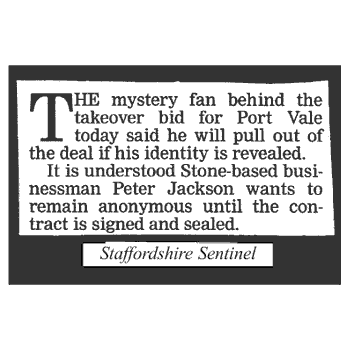
Private Eye
c.
2004
http://www.private-eye.co.uk/index.cfm/issue.1099 - broken link
newseum
https://www.newseum.org/
Northern newspapers
UK
https://www.theguardian.com/uk/2004/sep/16/
northerner.davidward
British Library newspapers UK
https://www.bl.uk/subjects/
news-media
British Library
Online Newspaper Archive UK
https://www.bl.uk/collection-guides/
british-newspaper-archive
The British Newspapers Archive
Discover History As It Happened
UK
Access hundreds of historic newspapers
from all over Britain and Ireland
https://www.britishnewspaperarchive.co.uk/
WW2 > The Daily Worker
https://www.theguardian.com/politics/1941/jan/22/
past.secondworldwar
Belfast's News
Letter,
the UK's oldest continuously published newspaper
https://www.theguardian.com/media/2004/jan/22/
pressandpublishing.northernireland
The Voice
The Pink Paper UK
https://www.theguardian.com/uk/2004/oct/05/
media.pressandpublishing
https://www.theguardian.com/media/2004/oct/20/
financialtimes.pressandpublishing
USA > Pulitzer Prizes
USA
https://www.npr.org/2025/01/04/
nx-s1-5248299/cartoonist-quits-wapo-over-bezos-trump-cartoon-washingtonpost
https://www.nytimes.com/spotlight/2022-
pulitzer-airstrikes-gone-wrong
https://www.npr.org/2022/05/09/
1097566167/2022-pulitzer-prizes-in-arts-and-letters-
go-to-fat-ham-and-the-netenyahus
https://www.nytimes.com/2016/04/19/
business/media/pulitzer-prize-winners.html
19th century > Joseph Pulitzer's New York World
https://www.nps.gov/stli/learn/historyculture/
joseph-pulitzer.htm
win an
honorary Pulitzer USA
https://www.npr.org/2021/06/11/
1005601724/darnella-frazier-teen-who-filmed-george-floyds-murder-
wins-pulitzer-prize-citati
Data Journalism Awards
UK
http://www.guardian.co.uk/news/datablog/2012/may/31/
data-journalism-awards-winners
Gerald
Loeb Award
- one of
the most prestigious prizes
in
business and finance journalism USA
https://www.propublica.org/atpropublica/
propublica-wins-loeb-award - October 1, 2021
What the Papers
Say awards
British Press
awards
Webby awards
UK
http://www.guardian.co.uk/media/2009/may/05/
guardian-wins-three-webby-awards
Maggies Award
UK
http://www.guardian.co.uk/media/gallery/2009/sep/15/
magazines-maggie-awards
press release
UK > London > Grub Street
https://en.wikipedia.org/wiki/
Grub_Street
typefaces USA
https://www.nytimes.com/2020/10/16/
business/media/ed-benguiat-dead.html
misprint
be
mangled
technical hitch
cover lines
dummy text
headline
subhead
part of a paragraph
composing room UK
https://www.theguardian.com/media/2023/jan/29/
a-newspaperman-to-his-fingertips-
late-observer-editor-donald-trelford-remembered
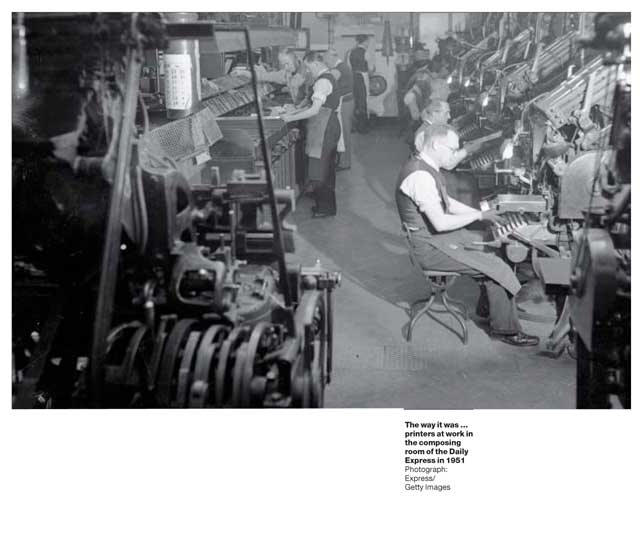
The Guardian p. 24
4 October 2004
print
print edition
UK / USA
https://www.theguardian.com/media/2017/sep/21/
village-voice-final-edition-new-york-bob-dylan
https://www.npr.org/sections/thetwo-way/2017/08/23/
545538194/-village-voice-legendary-new-york-weekly-ending-its-print-edition
UK print
industry UK
http://www.theguardian.com/media/2004/oct/04/
citynews.business
printer
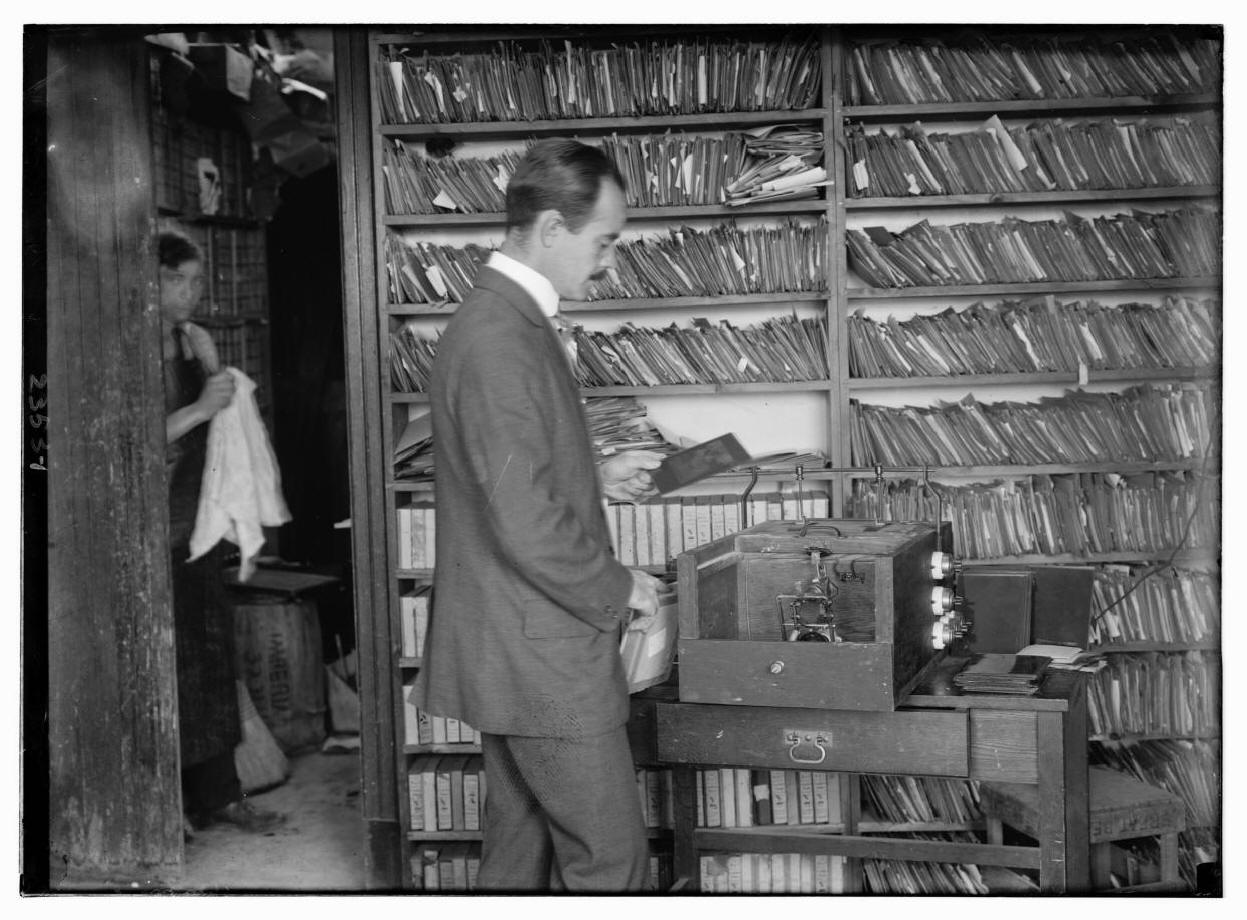
TITLE:
[Printing the Bain News Service photos
using a Bain-McDonald auto printer]
MEDIUM: 1 negative : glass ; 5 x 7 in. or smaller.
CREATED/PUBLISHED:
[between 1910 and 1915]
CREATOR:
Bain News Service, publisher.
NOTES: Forms part of:
George Grantham Bain Collection (Library of Congress).
REPOSITORY:
Library of Congress Prints and Photographs Division
Washington, D.C.
20540 USA
http://hdl.loc.gov/loc.pnp/pp.print
DIGITAL ID:
(digital file from original neg.) ggbain 10071
http://hdl.loc.gov/loc.pnp/ggbain.10071
http://lcweb2.loc.gov/pp/ggbainhtml/ggbaintips.html
USA >
Library of Congress
U.S. News and World
Report Magazine
Photograph Collection 1952-1986
The collection consists
of almost
1.2 million original
35mm
and 2 1/4 inch negatives
(primarily black & white)
and 45,000 contact sheets
donated by the U.S. News & World Report, Inc.
The collection is primarily photographs taken
by staff of the U.S. News & World Report Magazine
between 1952 and 1986
https://guides.loc.gov/
us-news-and-world-report-photograph-collection
USA > Library of Congress
The Chicago Daily News >
Photographs 1902-1933
This collection comprises over 55,000 images of urban life
captured on glass plate negatives between 1902 and 1933
by photographers employed by the Chicago Daily News,
then one of Chicago's leading newspapers.
https://www.loc.gov/item/2002565163/
USA
> Library of Congress
The George Grantham
Bain Collection
photographic files of one of America's
earliest news picture agencies
The collection richly documents sports events, theater,
celebrities, crime, strikes, disasters, political activities
including the woman suffrage campaign,
conventions and public celebrations.
The photographs Bain produced and gathered for distribution
through his news service were worldwide in their coverage,
but there was a special emphasis on life in New York City.
The bulk of the collection
dates from the 1900s to the mid-1920s,
but scattered images can be found
as early as the 1860s and as late as the
1930s.
Available online are 39,744 glass negatives
and a selection of about 1,600 photographic prints
for which copy negatives
exist.
https://www.loc.gov/pictures/collection/
ggbain/
press review
devote
a lot of space to + N
carry
the headline
carry
the picture of + N
run
a story
about + N
The Guardian focuses
on + N
continue
to focus
on + N
That's the Sun
damning verdict
The paper carries
a front page picture showing + N
The paper argues
The
Guardian carries
the photograph of + N
N devotes six pages to
+ N
The Guardian
asks
whether...
The Times devotes
its editorial to + N
The Sun claims...
The Mirror highlights...
The Guardian devotes
much of its frontspage to N
That's how the Daily Mail
views
The Sun leads
with N
according to The Sun
The Daily Mail on Sunday
says...
The Sunday Telegraph
reveals...
The FT
says...
The paper
goes
on
to say
The
Sun
quotes
X as saying that...
The Times
explains
how...
The Daily Telegraph reports on
N
The Times
reports
that...
The papers
keep
their focus on N
As the paper
points out
... says the paper over its frontspage
the leading article on page 1
of the Independent
of Monday August
4
Corpus of news articles
Media
> News, Journalism
Media, Newspaper, Journalism
The Times >
Nature notes
February 04, 2005
GREY SQUIRRELS are mating. Several males may
chase a female through the bare branches, making harsh buzzing notes, and try to
mate with her. Males will also chase away their rivals. The female crouches on
the ground when she is ready to mate, and generally it is the first male to get
to her who succeeds.
Once the female is pregnant, she appropriates
a warm winter drey well lined with moss and feathers, or builds a new one, and
keeps all other squirrels out of it. She gives birth in the drey about six weeks
after she has mated. Usually she has three young. They are naked and blind at
first, but their fur soon grows, and they are first seen out of the drey when
they are about seven weeks old. This will generally be about the end of April or
the beginning of May.
Grey squirrels bury nuts and acorns in the
ground in autumn, and now they are looking for them again. But they do not
remember where they put them and can only find them by smell. Many get
overlooked, and sprout up as young trees in the spring.
DJM
Nature notes,
Times,
4.2.2005,
http://www.timesonline.co.uk/
article/0,,61-1469617,00.htm - broken link
New Orleans Newspaper
Scales Back
in Sign of Print Upheaval
May 24, 2012
The New York Times
By DAVID CARR
and CHRISTINE HAUGHNEY
The Times-Picayune, a 175-year-old fixture in New Orleans and a
symbol of the city’s gritty resilience during Hurricane Katrina and its
aftermath, has buckled under the pressures of the modern newspaper market.
Advance Publications, owned by the Newhouse family, said Thursday it would scale
back the printed edition to three days a week and impose staff cuts as a way to
reduce costs as well as shift its emphasis to expanded online coverage.
The decision will leave New Orleans as the most prominent American city without
a newspaper that is printed every day. But it also reflects the declining lure
of the paper as a printed product. In 2005, before Katrina struck, the paper had
a daily circulation of 261,000; in March of this year, the circulation was
132,000.
The developments were the latest instance of reorganization in a rapidly
changing industry, which continues to struggle with declining advertising
revenue and the changing preferences of readers for online news outlets. Data
tracked by the Audit Bureau of Circulations showed that papers with a
circulation of 25,000 or more had a 21 percent drop in circulation between 2007
and 2012.
In response, papers have slashed costs, trimmed the number of employees, reduced
coverage, and some have experimented with cutting the number of days they print.
The Ann Arbor News in Michigan, another Newhouse newspaper, cut back the printed
paper to Thursdays and Sundays in 2009, and hired a fraction of its former staff
to run the Web site AnnArbor.com. In 2010, The Detroit News began delivering its
paper to subscribers on Thursdays and Fridays only, although it prints papers
every day.
Executives at Advance said the paper and its Web site, NOLA.com, would be
reconstituted into a new company, the NOLA Media Group, as a way of adapting to
the new ways news was being delivered and consumed in an increasingly digital
age. An internal memo to the staff said there would be newsroom reductions, but
did not specify how many.
“This is a forced march to digital, brought on by the fact that advertising this
year has declined so much more than the industry expected,” said Ken Doctor, a
consultant to the newspaper industry. “Everyone knows that print editions are
going the way of the steam engine, but I question whether they have the
readiness to make this switch in such a hurry.”
After the experiment with decreased frequency in Ann Arbor and a string of small
daily newspapers in Michigan, the company decided that it was the best, and
perhaps only, route to ensure the long-term survival of its newspaper in New
Orleans. Beginning in the fall, The Times-Picayune will issue print editions on
Wednesday, Friday and Sunday, in part because those days are the most valuable
for advertisers, said Ricky Mathews, who will become president of the NOLA Media
Group.
“We did not make these changes out of desperation — we have a very strong
operation in New Orleans — but we face tremendous challenges in terms of both
revenue and the 24 hour news cycle,” Steven Newhouse, chairman of Advance.net,
the corporate digital arm of Advance Publications, said in a telephone
interview. “We needed to make a plan for the long-term and not sit still for a
spiral of losses and cutbacks.”
The Times-Picayune changes were followed hours later by an announcement of a
similar initiative at three Newhouse papers in Alabama — The Birmingham News,
The Press-Register of Mobile and The Huntsville Times. They, too, will print
only three days a week and undergo staff cuts.
The shake-up at The Times-Picayune is certain to change the traditionally
intimate relationship New Orleanians have with their newspaper. Despite
circulation declines, it is a fixture in coffee shops and barber shops (it has a
75.5 percent penetration in a city of about 340,000).
Nothing bonded the city and the paper more closely than the adversity of
Katrina, the devastating storm that shut down communications around New Orleans
for a few days in 2005. The Times-Picayune published online for three days when
it could not publish in print, serving as a trusted messenger and conveyor of
information in a period of chaos and grief. For its work, the staff was awarded
two Pulitzer Prizes in 2006, for public service and breaking news coverage.
On Thursday, people around the city questioned whether the paper would be able
to maintain its watchdog role in a place where governance has traditionally
demanded close watching. But even politicians declared their support for a paper
that has continued to do ambitious, in-depth reporting.
“I expect there to be ferocious and very aggressive attempts to communicate to
the ownership how important this paper is to the city of New Orleans,” said
Mayor Mitch Landrieu, himself a former paperboy.
On Thursday evening, a group of civic and business leaders gathered at the home
of Anne Milling, who is on the board of the paper and is active in civic
affairs, to consider options like trying to persuade Newhouse to reconsider or
forming an investor group to buy the paper outright.
Mr. Newhouse said the newspaper was not for sale. “We are very bullish on our
future in New Orleans,” he said. By creating enhanced print products three days
a week, he expects to protect that ability of the newsroom to create quality
journalism while using the Web to compete in a changed news cycle.
New Orleans has been steadily, if unevenly, recovering from the flooding after
Katrina. And because of billions in federal recovery dollars, it has weathered
the recession better than many other places. But it is a smaller city than it
was seven years ago.
“The fact is that we have fewer people and fewer households,” said Janet
Speyrer, a professor of economics at the University of New Orleans.
Jim Amoss, the editor, will remain with the company as vice president for
content. Mr. Amoss met with the staff periodically all day. “The shock of the
new has to wear off and it will take some talking and thinking about,” he said.
“This is hard news to wrap your head around and adapt to. They are talented
journalists and they understand the trends in the industry, I wasn’t telling
them something that was foreign to them.”
Reporters were heartened to hear from Mr. Amoss, but wondered why their paper
had suddenly become a guinea pig, the largest so far, in the transition to
digital.
According to a 2010 report from the Kaiser Foundation, 36 percent of residents
in New Orleans still do not have Internet access at home. “Both my subjects and
my neighbors are always looking for a print copy of what I do,” said one
reporter.
The reporter added: “One of the charms of New Orleans is that we are 10 years
behind in everything, and that includes the Web.”
Campbell Robertson contributed reporting.
New Orleans Newspaper Scales Back in Sign of Print
Upheaval,
NYT,
24.5.2012,
https://www.nytimes.com/2012/05/25/
business/media/
in-latest-sign-of-print-upheaval-new-orleans-paper-scaling-back.html
Franklin McMahon,
Who Drew the News,
Dies at 90
March 7, 2012
The New York Times
By DOUGLAS MARTIN
Franklin McMahon, an artist who defied journalism’s preference
for photographs to make a renowned career of drawing historic scenes in elegant,
emphatic lines, died on Saturday in Lincolnshire, Ill. He was 90.
The cause was a stroke, his family said.
With sketch pads in hand, Mr. McMahon covered momentous events in the civil
rights struggle, spacecraft launchings, national political conventions and the
Vatican, turning out line drawings for major magazines and newspapers. Many were
later colored by watercolor or acrylic paints, and most rendered scenes in a
heightened, energetic style. His goal, he said, was to step beyond what he
considered the limitations of photography to “see around corners.”
Photographers capture a moment, he said, but he could combine moments, often
hours apart, into a single picture and thereby convey, he believed, a larger
truth. He might, for example, pluck images from a political convention — a
balloon drop, a speaker, a network camera — that never appeared together, and
put them in the same frame.
Of Mr. McMahon’s nearly 9,000 pictures, perhaps the most dramatic was created in
1955 in Mississippi at the trial of the killers of Emmett Till, a black
14-year-old from Chicago who was accused of flirting with the young white wife
of a grocery owner. Abducted from the home of an uncle he was visiting, he was
beaten and shot, and his mutilated body was found in the Tallahatchie River,
weighted with a cotton gin fan tied around his neck with barbed wire. The
killing was a catalyst of the civil rights movement.
Life magazine hired Mr. McMahon to make courtroom sketches of the trial, held in
Sumner, Miss., after the judge barred photographers. Mr. McMahon used a small
spiral notebook, assuming most onlookers would think he was a print reporter
doodling. He later redrew the sketches in his hotel room, and again in his
studio.
One of the most celebrated of the trial sketches published in Life captured Mose
Wright, Emmett’s uncle, as he stood and identified the two men on trial as the
ones who had abducted the youth.
“I was grasping for a viewpoint that I could make the center of everything, and
after he did that, I had just what I needed,” Mr. McMahon said. “He shook off
300 years of history to stand up and point like that.”
(A black photographer, Ernest C. Withers, who became renowned for his images of
the civil rights struggle and who had sneaked a camera into the courtroom, also
snapped a picture of the moment. His photo was published in The Chicago
Defender, an African-American newspaper, and came to be regarded as an emblem of
courage.)
A jury of white men acquitted the defendants. But in 1956, in an interview with
Look magazine for which they were paid, they admitted guilt, knowing they could
not be retried under laws against double jeopardy.
William Franklin McMahon was born in Chicago on Sept. 9, 1921. He sold a cartoon
to Collier’s magazine while he was still in high school. After graduating, he
enlisted in the Army Air Forces and served as a navigator on a B-17 bomber. His
plane was shot down, and he was captured by the Germans. In prison camp, he drew
his guards surreptitiously when he could find paper.
He returned home to marry his high school sweetheart, the former Irene Mary
Leahy, and lived for many years in Lake Forest, Ill. She died in 1997. He is
survived by his sons, William, Franklin, Mark, Patrick, Hugh and Michael; his
daughters, Mary McMahon Taplin, Deborah McMahon Osterholtz, Margot McMahon and
Michelle McMahon-Kubota; 13 grandchildren; and five great-grandchildren.
Margot McMahon said that her father’s wartime experience prompted him to abandon
his plans to be a cartoonist. He used the G.I. Bill to study at the Chicago
Academy of Fine Arts and other art schools.
After working for Life at the Till trial, Mr. McMahon, a freelance artist,
covered almost every national political convention from 1960 to 2004, the
Selma-to-Montgomery civil rights march, the Nixon-Kennedy debates and the Second
Vatican Council.
He made several films using his pictures, and the showing of one, about Chicago
at Christmas, became a tradition in the city.
Mr. McMahon insisted he was not a courtroom artist, although he was widely
praised for his coverage of the Chicago Eight (later the Chicago Seven) trial of
demonstrators who had been arrested during the 1968 Democratic National
Convention in Chicago. He also said he was not an illustrator, although he was
inducted into the Society of Illustrators Hall of Fame. He was definitely not a
portraitist, he said, because he never met his subjects. “I sit in the corner
and make drawings of them,” he said.
And he even rejected the label of artist, though his work has been shown at many
museums, including the Smithsonian. What he was, he said, was simply a reporter,
who used art to tell stories.
Franklin McMahon, Who Drew the News, Dies at 90,
NYT,
7.3.2012,
https://www.nytimes.com/2012/03/08/
us/franklin-mcmahon-who-drew-the-news-dies-at-90.html
Paying for News?
It’s Nothing New
August 6, 2011
The New York Times
By JEREMY W. PETERS
Jeremy W. Peters
is a media reporter
for The New York Times.
IN April 1912, the surviving operator of the Titanic’s wireless
communications system was paid a handsome sum for his account of narrowly
escaping death aboard the sinking ship.
It will probably surprise some journalistic purists to learn that the news
outlet that forked over $1,000 for Harold Bride’s harrowing tale — multiple
times his annual salary — was not some sensationalist purveyor of yellow
journalism, but The New York Times.
Evolving standards or no, checkbook journalism has been a persistent and
problematic feature of news coverage at even the most powerful and reputable
news organizations, long predating the hyper-competitive 24-hour cable news
cycle and the celebrity gossip boom.
And the issue is not likely to disappear anytime soon, even with ABC News’s
contrite acknowledgment last month that to protect its reputation, it would have
to cut back on the kinds of payments that have helped the network score a string
of major exclusives in recent years. In Britain, public tolerance seems to have
reached its limit with revelations that journalists working for Rupert Murdoch’s
recently closed News of the World routinely paid the police for information as
well as hacked the phones of crime victims.
Far from existing at the periphery of journalism and society, the payments have
reached the highest levels of politics. Newsmakers who have been cut large
checks over the years include not just players in courtroom melodramas like the
Casey Anthony and O. J. Simpson trials, but former presidents.
When the British journalist David Frost secured his interview with Richard M.
Nixon in 1976, it was because he outbid his American competitors, offering the
former president a staggering sum of $600,000. But Mr. Nixon wasn’t the only
ex-president paid to appear on camera. Dwight D. Eisenhower and Lyndon B.
Johnson both received sums from CBS News for sitting for interviews after they
left office.
Networks have long employed the use of high-dollar consulting contracts, which
allow them to effectively place prominent political figures on retainer. Gerald
R. Ford and former Secretary of State Henry A. Kissinger signed exclusive
arrangements, each reported to be in the $1 million range, as NBC News
consultants. Exclusive consulting arrangements exist today most visibly on Fox
News, with its hiring of Sarah Palin, Karl Rove and other prominent Republicans
as contributors.
Every so often, instances of checkbook journalism produce enough of an outcry
that the media business does some soul-searching, as it is doing now. ABC News
in particular is under scrutiny for a flurry of payments in pursuit of
sought-after news subjects like Ms. Anthony, the mother tried and acquitted in
the death of her young daughter; Jaycee Lee Dugard, a kidnapping victim held in
captivity for almost a decade; and Meagan Broussard, the 26-year-old who
received lewd photos from Anthony D. Weiner, the congressman who later resigned.
After each revelation that money has changed hands in pursuit of a major scoop,
a familiar cycle of denial followed by a carefully parsed explanation tends to
emerge. News outlets twist themselves into logical knots insisting that they do
not pay for interviews. The payment is always for something else, tangible or
intangible, like one’s time or the rights to memorabilia. It is a rare but
sometimes necessary evil, they say.
The jargon may be different now, but the debate has been the same for decades.
Before there were licensing fees — the arrangement popular with news outlets
today, in which they pay an interview subject to broadcast personal photos or
video — there were “memoir” fees paid to newsmakers for recounting their stories
at length. Esquire, for instance, paid $20,000 in 1970 to William L. Calley Jr.,
the Army lieutenant at the center of the My Lai massacre in Vietnam, for his
“confessions,” which the magazine used as the basis for a series of articles.
One of the biggest controversies over such payments erupted in 1975 after CBS
News coughed up a reported $100,000 for an extended interview with the former
Nixon chief of staff H. R. Haldeman, who spent 18 months in prison for his role
in the Watergate scandal.
At the time, Robert Chandler, a CBS vice president, justified the payment as “a
memoir of his five years at the White House. That’s different from paying for a
breaking news story.”
The CBS rationalization — after all, its payment was little different from a
hefty book advance to a controversial figure — shows that the issue of paying
for news is rarely black and white.
More than 30 years later, the gray areas are as opaque as ever. ABC News is
correct when it says a $200,000 payment for videos of Ms. Anthony’s dead
daughter didn’t violate network policy. It didn’t pay for an interview, after
all. But it did indirectly subsidize Ms. Anthony’s lawyers, who used the money
for her legal defense.
It wasn’t the first time a news outlet had subsidized the defense of prominent
criminal suspect. During the Lindbergh kidnapping trial in 1935, Hearst
Newspapers paid for a high-profile attorney to defend the man accused, Bruno
Hauptmann, in an arrangement that guaranteed them exclusive access.
Experts said the practice of paying for news might not keep embarrassing news
organizations if they weren’t so murky about their standards.
“It has been handled in a fairly dishonest way by news organizations that view
it as a disreputable practice,” said Lorna Veraldi, an associate professor of
journalism and mass communications at Florida International University, who has
studied and written about the issue. “They pretend not to engage in it by paying
for memoirs or for photographs, but that has made it a subject of more outrage.”
Just how much outrage is focused on the issue is difficult to gauge. Indeed,
part of the reason checkbook journalism endures could be that most Americans
don’t see it as a major offense.
“I’ll be honest with you,” said Kevin Z. Smith, chairman of the ethics committee
of the Society of Professional Journalists, “there’s no groundswell from
citizens’ groups’ saying, stop paying for stories because you’re tainting the
truth.”
For now, though, ABC News has acknowledged that paying for exclusives harms its
reputation, and a criminal inquiry is unfolding in Britain.
But experts said don’t be surprised if checkbook journalism resurfaces, perhaps
under another guise.
“These news organizations will have to feign shock and horror and figure out
another way to do it surreptitiously,” said Robert Boynton, director of the
long-form journalism program at the Arthur L. Carter Journalism Institute at New
York University.
“It goes on because money is the literal coin of the realm. It is going to
continue no matter what.”
Paying for News? It’s Nothing New,
NYT,
6.8.2011,
https://www.nytimes.com/2011/08/07/
sunday-review/paying-for-news-its-nothing-new.html
Where News Is Power,
Aides Fight to Be Well-Armed
January 17, 2011
The New York Times
By ASHLEY PARKER
WASHINGTON — Bobby Maldonado has the morning routine of a well-trained
marathoner.
With the help of three alarm clocks, he gets up at 4 a.m., is showered and out
the door in less than an hour, and scans his BlackBerry almost constantly as he
makes his pretimed 12- to 13-minute trek to the Red Line Metro stop where he
catches the first train downtown.
He knows exactly where to stand so he can get into the car that deposits him
just steps from the escalator at the Farragut North station. “It’s an efficiency
thing,” he explained, “so I don’t get stuck behind people, so I hit the
crosswalk at the right minute.” Cutting diagonally across Farragut Square, he
arrives at his office at the U.S. Chamber of Commerce on H Street just after
5:30 a.m. There, in a darkened cubicle, he scans the Internet for the day’s news
and condenses it into a two-page memo that he shoots off to Thomas J. Donohue,
the Chamber’s president, and other top executives before 8 a.m. He is never
late.
Mr. Maldonado, 25, is one of the dozens of young aides throughout the city who
rise before dawn to pore over the news to synthesize it, summarize it and spin
it, so their bosses start the day well-prepared. Washington is a city that
traffics in information, and as these 20-something staff members are learning,
who knows what — and when they know it — can be the difference between
professional advancement and barely scraping by.
“Information is the capital market of Washington, so you know something that
other people don’t know and you know something earlier than other people know
it, is a formulation for increasing your status and power,” said David
Perlmutter, the director of the University of Iowa’s School of Journalism and
Mass Communication. “So any edge you can use to get stuff faster, earlier,
better or exclusively is very important.”
For Mr. Maldonado, who said that “the information wars are won before work,”
that means rising early to browse all of the major newspapers, new polling data,
ideological Web sites and dozens of news alerts needed to equip his bosses with
the best, most up-to-date nuggets.
“Our executives walk into meetings and they’re doing battles, whether it’s on
health care or cap and trade, and information is power, and my job is to make
sure they’re armed with the most powerful information,” he said. “It’s reading
the 1,000 stories in the papers and Hill rags, and finding that one needle in
the haystack that’s going to matter.”
No hard data exists on how many people spend the hours before breakfast rounding
up news and e-mailing clips and quick summaries, and everyone’s routine varies
slightly.
Andrew Bates, a media monitor in the White House communications office, is up by
4 a.m. to look over 30 to 40 Web sites and blogs, as well as watch the morning
television news and talk shows, and send out relevant news clips to the top
ranks of the administration. He has even been known — with the help of Google
Translator — to translate articles from other languages. Mr. Bates could “give
anyone in this town a run for their money on ‘Jeopardy,’ ” joked Jen Psaki, the
deputy White House communications director.
Mr. Bates, 24, said his early-morning search was aimed at harvesting “something
that’s very strong, that advances an argument well, or anything that could be
jeopardizing or damaging, like criticism.”
Over at the Treasury Department, Megan Leary, a financial economist for the
markets room, and six other analysts are each assigned one day a week to get to
work at roughly 5 a.m. There, they monitor overnight shifts in the markets and
put together a morning briefing for the Treasury secretary.
“I think a lot of why the markets room is valuable is because it’s very
unfiltered,” Ms. Leary said. “It’s not like we write something and a week later
it goes to the secretary or president. They get it that day.”
Ms. Leary is becoming a familiar customer to the drivers of the cab company she
calls the night before to set up her predawn rides. “Sometimes I just get in a
cab and I don’t need to say where I’m going,” she said. “He just goes.”
At the Chamber, Mr. Maldonado’s duties also include a morning phone call with
Mr. Donohue, the president, who sometimes presses him for a more in-depth
analysis on certain topics.
“I study three hours every day, and every now and then I go before the professor
and answer questions,” Mr. Maldonado said. “I’m not a policy expert, but I’ll
always try to know two or three questions he might ask.”
Getting up early is nothing new, but the lightning speed of news on the Internet
and the proliferation of outlets like Politico, which place a premium on
“winning” the day, has made the job more demanding and pushed the mornings ever
earlier.
“There’s no news cycle anymore,” Dr. Perlmutter said. “You don’t want to be
coming into the office at 8 a.m., and everyone is saying, ‘Oh my God, can you
believe what happened?’ And you’re going, ‘What happened?’ ”
Such a response is not likely to come from Mr. Bates, according to the White
House communications director, Daniel H. Pfeiffer, who said these jobs benefit
employer and employee.
“Rapid response requires knowing that there is something that needs response,”
Mr. Pfeiffer said. “For such a young guy, Andrew has a great ability to sniff
out stories that need to be handled with dispatch. During our biggest fights,
from health care to the Supreme Court confirmations, Andrew repeatedly spotted
potential problems in the farthest reaches of the Internet before anyone else.
That information was essential to our success.”
A Democratic National Committee spokeswoman, Brandi Hoffine , rises between 5
and 6 a.m. for what she affectionately calls “Breakfast with Brandi”— the time
she begins sending out news articles she sees as favorable to the committee’s
agenda to her e-mail list of 500 or so reporters.
“We all work in environments where a 24-hour news cycle can very quickly become
a 24-minute news cycle,” Ms. Hoffine said. “Being in a reporter’s inbox first,
even by a few minutes, can make a big difference.”
Most of those who work the predawn shift go on to put in a more-than-full day at
the office, leaving in the evening like everyone else. The lack of sleep can
make for a tough grind. But for Washington’s young and ambitious, it also
provides a welcome opportunity to learn a department or an agency from the
ground up and can often be a way to fast-track a career. In the White House, for
instance, Dag Vega, the director of broadcast media, and Amy Brundage and Reid
Cherlin, both Obama administration press officers, all cut their teeth trolling
for meaty early-morning news clips.
Until recently, when he was promoted to assistant communications director for
Representative John A. Boehner’s political office, Kevin Boland, 25, put
together a 50-page national press briefing for Mr. Boehner and his House office.
He recalled getting up around 5 a.m., and still in his pajamas, putting on some
coffee, and reading Web sites and compiling his report from home. At 7 a.m. he
would hit the “send” button on his computer, and walk over to the Capitol for
the rest of his day.
“I found it helpful and valuable, and I have a much better appreciation for what
the people in the office do,” Mr. Boland said, joking: “They at least have to
know who I am if they want to junk me, or put me in the trash.”
Where News Is Power,
Aides Fight to Be Well-Armed,
NYT,
17.1.2011,
https://www.nytimes.com/2011/01/18/
us/politics/18early.html
Detroit Journal
Detroit’s Daily Papers
Are Now Not So Daily
March 31, 2009
The New York Times
By RICHARD PÉREZ-PEÑA
and MARY CHAPMAN
DETROIT — Maybe once a year, a city has a news day as heavy as the one that
just hit Detroit: The White House forced out the chairman of General Motors,
word leaked that the administration wanted Chrysler to hitch its fortunes to
Fiat, and Michigan State University’s men’s basketball team reached the Final
Four, which will be held in Detroit.
All of this news would have landed on hundreds of thousands of Motor City
doorsteps and driveways on Monday morning, in the form of The Detroit Free Press
and The Detroit News.
Would have, that is, except that Monday — of all days — was the long-planned
first day of the newspapers’ new strategy for surviving the economic crisis by
ending home delivery on Mondays, Tuesdays, Wednesdays and Saturdays. Instead, on
those days, they are directing readers to their Web sites and offering a
truncated print version at stores, newsstands and street boxes.
“This morning, I felt like something was missing,” said Nancy Nester, 51, a
program coordinator at a traumatic brain injury center who is from West
Bloomfield and has subscribed to both papers for four years. “There was this
feeling of emptiness.”
She did not even bother to pick up the condensed print versions that were
offered free on Monday. “I don’t have time to stop at the store,” she said.
“That’s why I have home delivery.”
To Carol Banas, a retired city planner and longtime Free Press reader, the idea
of not having a printed paper is unimaginable. “I’m at the age where I like my
newspapers in hand,” said Ms. Banas, 56, who read a hard copy of Monday’s
abbreviated Free Press in an Einstein Brothers Bagels shop in Royal Oak. “I know
that’s English online, but it’s not the same.”
On Monday, The News and The Free Press, which share business functions under a
joint operating agreement, distributed more than half a million free copies of
their condensed print editions, but they will begin charging (50 cents, as
always) on Tuesday. The Free Press, the larger of the papers, will still make
home deliveries on Thursdays, Fridays and Sundays, and The News, which does not
have a Sunday issue, will deliver on Thursdays and Fridays.
They have been heavily promoting not just their Web sites, but also online
“e-editions” that look just like the printed papers. The e-editions have been
open to everyone, but executives say that soon, only paying customers will be
able to see them. For a day, at least, there was no doubt about the demand: the
computers delivering the e-editions could not keep up on Monday morning, and
many people were unable to load them.
“We had an overwhelming — literally overwhelming — number of people trying to
get onto the e-edition site this morning, and it’s gratifying on one hand, but
it slowed things down,” said Jonathan Wolman, editor and publisher of The News,
which is owned by MediaNews Group.
The papers went to great effort to prepare readers, printing warnings and guides
to the new format, but not everyone got the message. “A lot of people were
prepped for it, and yet we’ve also been hearing from folks who were surprised
that today was the day,” Mr. Wolman said.
With profits shrinking fast, newspapers are grasping for the formula that will
ensure survival, and a few have decided to save on printing and distribution by
publishing only on the most profitable days of the week — potentially a step
toward an all-digital future. The Detroit papers are not going quite that far,
but clearly the impetus is the same. Executives have called it a calculated
gamble, but they say that Thursdays, Fridays and Sundays account for more than
80 percent of their advertising revenue.
About 50,000 people tried to click on the e-editions Monday, five times as many
as usual, said David Hunke, chief executive of the Detroit Media Partnership.
And squeezing all of the day’s news into a 32-page print edition “certainly
tested our theories on design and editing.”
In a speech to the Detroit Economic Club on Monday, Mr. Hunke presented a
strategy for winning readers electronically. The papers will soon be available
on Amazon’s Kindle reader and, possibly by early next year, on another device
from a company called Plastic Logic, said Mr. Hunke, who is also the publisher
of The Free Press, which is owned by the Gannett Company.
Despite the added demand and confusion, it probably worked to the papers’
benefit that the new strategy began with a crush of news, said Bob Giles, who
held Mr. Wolman’s posts in the 1990s and is now curator of the Nieman Foundation
for Journalism at Harvard University. “It reminds people how valuable their
newspapers are, even if it’s online,” he said.
The future no doubt lies in that direction, but for now, it is a tough sell for
some readers of a certain age.
Howard Waxer, 60, dropped his longtime Free Press subscription in anticipation
of losing seven-day delivery and said he would not read online. He leafed
through The Free Press while eating a club sandwich at Country Oven Family
Dining restaurant in Berkley and said this would be his approach from now on —
pick up a copy and read it over lunch.
“There’s always going to be this,” he said, holding up the paper. “I can’t
picture this city without a paper coming out.”
Mary M. Chapman reported from Detroit,
and Richard Pérez-Peña from New York.
Detroit’s Daily Papers
Are Now Not So Daily,
NYT,
31.3.2009,
https://www.nytimes.com/2009/03/31/
business/media/31paper.html
Op-Ed Columnist
The Daily Me
March 19, 2009
The New York Times
By NICHOLAS D. KRISTOF
Some of the obituaries these days aren’t in the newspapers but are for the
newspapers. The Seattle Post-Intelligencer is the latest to pass away, save for
a remnant that will exist only in cyberspace, and the public is increasingly
seeking its news not from mainstream television networks or ink-on-dead-trees
but from grazing online.
When we go online, each of us is our own editor, our own gatekeeper. We select
the kind of news and opinions that we care most about.
Nicholas Negroponte of M.I.T. has called this emerging news product The Daily
Me. And if that’s the trend, God save us from ourselves.
That’s because there’s pretty good evidence that we generally don’t truly want
good information — but rather information that confirms our prejudices. We may
believe intellectually in the clash of opinions, but in practice we like to
embed ourselves in the reassuring womb of an echo chamber.
One classic study sent mailings to Republicans and Democrats, offering them
various kinds of political research, ostensibly from a neutral source. Both
groups were most eager to receive intelligent arguments that strongly
corroborated their pre-existing views.
There was also modest interest in receiving manifestly silly arguments for the
other party’s views (we feel good when we can caricature the other guys as
dunces). But there was little interest in encountering solid arguments that
might undermine one’s own position.
That general finding has been replicated repeatedly, as the essayist and author
Farhad Manjoo noted in his terrific book last year: “True Enough: Learning to
Live in a Post-Fact Society.”
Let me get one thing out of the way: I’m sometimes guilty myself of selective
truth-seeking on the Web. The blog I turn to for insight into Middle East news
is often Professor Juan Cole’s, because he’s smart, well-informed and sensible —
in other words, I often agree with his take. I’m less likely to peruse the blog
of Daniel Pipes, another Middle East expert who is smart and well-informed — but
who strikes me as less sensible, partly because I often disagree with him.
The effect of The Daily Me would be to insulate us further in our own
hermetically sealed political chambers. One of last year’s more fascinating
books was Bill Bishop’s “The Big Sort: Why the Clustering of Like-Minded America
is Tearing Us Apart.” He argues that Americans increasingly are segregating
themselves into communities, clubs and churches where they are surrounded by
people who think the way they do.
Almost half of Americans now live in counties that vote in landslides either for
Democrats or for Republicans, he said. In the 1960s and 1970s, in similarly
competitive national elections, only about one-third lived in landslide
counties.
“The nation grows more politically segregated — and the benefit that ought to
come with having a variety of opinions is lost to the righteousness that is the
special entitlement of homogeneous groups,” Mr. Bishop writes.
One 12-nation study found Americans the least likely to discuss politics with
people of different views, and this was particularly true of the well educated.
High school dropouts had the most diverse group of discussion-mates, while
college graduates managed to shelter themselves from uncomfortable perspectives.
The result is polarization and intolerance. Cass Sunstein, a Harvard law
professor now working for President Obama, has conducted research showing that
when liberals or conservatives discuss issues such as affirmative action or
climate change with like-minded people, their views quickly become more
homogeneous and more extreme than before the discussion. For example, some
liberals in one study initially worried that action on climate change might hurt
the poor, while some conservatives were sympathetic to affirmative action. But
after discussing the issue with like-minded people for only 15 minutes, liberals
became more liberal and conservatives more conservative.
The decline of traditional news media will accelerate the rise of The Daily Me,
and we’ll be irritated less by what we read and find our wisdom confirmed more
often. The danger is that this self-selected “news” acts as a narcotic, lulling
us into a self-confident stupor through which we will perceive in blacks and
whites a world that typically unfolds in grays.
So what’s the solution? Tax breaks for liberals who watch Bill O’Reilly or
conservatives who watch Keith Olbermann? No, until President Obama brings us
universal health care, we can’t risk the surge in heart attacks.
So perhaps the only way forward is for each of us to struggle on our own to work
out intellectually with sparring partners whose views we deplore. Think of it as
a daily mental workout analogous to a trip to the gym; if you don’t work up a
sweat, it doesn’t count.
Now excuse me while I go and read The Wall Street Journal’s editorial page.
Roger Cohen is off today.
The Daily Me, NYT,
19.3.2009,
https://www.nytimes.com/2009/03/19/
opinion/19kristof.html
As Cities Go
From Two Papers to One,
Talk of Zero
March 12, 2009
The New York Times
By RICHARD PÉREZ-PEÑA
The history of The Seattle Post-Intelligencer stretches back more than two
decades before Washington became a state, but after 146 years of publishing, the
paper is expected to print its last issue next week, perhaps surviving only in a
much smaller online version.
And it is not alone. The Rocky Mountain News shut down two weeks ago, and The
Tucson Citizen is expected to fold next week.
At least Denver, Seattle and Tucson still have daily papers. But now, some
economists and newspaper executives say it is only a matter of time — and
probably not much time at that — before some major American city is left with no
prominent local newspaper at all.
“In 2009 and 2010, all the two-newspaper markets will become one-newspaper
markets, and you will start to see one-newspaper markets become no-newspaper
markets,” said Mike Simonton, a senior director at Fitch Ratings, who analyzes
the industry.
Many critics and competitors of newspapers — including online start-ups that
have been hailed as the future of journalism — say that no one should welcome
their demise.
“It would be a terrible thing for any city for the dominant paper to go under,
because that’s who does the bulk of the serious reporting,” said Joel Kramer,
former editor and publisher of The Star Tribune and now the editor and chief
executive of MinnPost .com, an online news organization in Minneapolis.
“Places like us would spring up,” he said, “but they wouldn’t be nearly as big.
We can tweak the papers and compete with them, but we can’t replace them.”
No one knows which will be the first big city without a large paper, but there
are candidates all across the country. The Hearst Corporation, which owns The
Post-Intelligencer, has also threatened to close The San Francisco Chronicle,
which lost more than $1 million a week last year, unless it can wring
significant savings from the operation.
In a tentative deal reached Tuesday night, the California Media Workers Guild
agreed to less vacation time, longer workweeks and more flexibility for The
Chronicle to make layoffs without regard to seniority. Union officials say they
have been told to expect the elimination of at least 150 guild jobs, almost
one-third of the total, and management is still trying to negotiate concessions
from the Teamsters union.
Advance Publications said last fall that it might shut down The Star-Ledger, the
dominant paper in New Jersey, but a set of cutbacks and union concessions kept
the paper alive in much-downsized form.
The top papers in many markets, like The Star Tribune in Minneapolis, The
Philadelphia Inquirer and The New Haven Register, belong to companies that have
gone into bankruptcy in the last three months.
The owners insist they have no intention of closing publications, but the
management making those assurances may not be in charge when the companies
emerge from reorganization.
Other publishers, like the Seattle Times Company and MediaNews Group, owner of
The Denver Post, The San Jose Mercury News and The Detroit News, are seen as
being at risk of bankruptcy. Many newspapers — from The Miami Herald to The
Chicago Sun-Times — have been put up for sale, with no buyers on the horizon.
Ad revenue, the industry’s lifeblood, has dropped about 25 percent in the last
two years (by comparison, automotive revenue for Detroit’s Big Three fell about
15 percent during the same period, although it has accelerated recently), and
that slide, accelerated by the recession, shows no sign of leveling off in 2009.
Web sites like Craigslist have been to classified ads what the internal
combustion engine was to horse-drawn buggies. The stock prices of most newspaper
publishers have dropped more than 90 percent from their peaks.
And magnifying the problem, for many chains, is a heavy burden of debt that they
took on, mostly in a spree of buying other newspapers from 2005 to 2007, just
before the bottom dropped out of the business.
The Tribune Company, for instance, owner of The Chicago Tribune, The Los Angeles
Times and other papers, filed for bankruptcy in December, largely because of its
debt load. The reality is that even though the economic climate is hard for
newspapers, without their debt payments the publishers in bankruptcy would still
make money, as do most newspapers around the country.
But profits are shrinking fast; taken together, major chains had an operating
profit margin of about 10 percent in 2008, down from more than 20 percent as
recently as 2004, according to research by John Morton, an independent analyst.
The recent closures and threatened closures point to an ominous new trend. For
The Chronicle, The Rocky, The Star-Ledger, The Citizen and others, debt was
never the problem and they belonged to solvent companies, but still they have
been losing money.
Analysts say that many other major papers have also slid into red ink recently,
including The Washington Post and The Boston Globe (which is owned by The New
York Times Company).
The steady trickle of downsizing that sapped American papers for almost a decade
has become a flood in the last few years. The Los Angeles Times still has one of
the largest news staffs in the country, about 600 people, but it was twice as
big in the late 1990s. The Washington Post had a newsroom of more than 900 six
years ago, and has fewer than 700 now. The Gannett Company, the largest
newspaper publisher in the country, eliminated more than 8,300 jobs in 2007 and
2008, or 22 percent of the total.
On Wednesday, The Miami Herald, once the celebrated flagship of the Knight
Ridder chain, said it would trim an additional 19 percent of its already
diminished staff.
Nearly every large paper in the country prints fewer pages and fewer articles,
and many have eliminated entire sections. Bureaus in foreign capitals and even
Washington have closed, and papers have jettisoned film criticism, book reviews
and coverage of local news outside their home markets.
Many papers are sharing coverage with former competitors in an effort to save
money. (The New York Times has also suffered from declining revenue, but has
been able to avoid serious newsroom cuts so far.)
For more than two centuries, newspapers have been the indispensable source of
public information and a check on the abuses of government and other powerful
interests. And they still reach a vast and growing audience. Daily print
circulation has dropped from a peak of 62 million two decades ago to around 49
million, and online readership has risen faster, to almost 75 million Americans
and 3.7 billion page views in January, according to Nielsen Online.
But no one yet has unlocked the puzzle of supporting a large newsroom purely on
digital revenue, a fact that may presage an era of news organizations that are
smaller, weaker and less able to fulfill their traditional function as the
nation’s watchdog.
“I can’t imagine what civil society would be like,” said Buzz Woolley, a wealthy
San Diego businessman who has been a vocal critic of the paper there, The
Union-Tribune, and the primary backer of an Internet news site,
VoiceofSanDiego.org. “I don’t want to imagine it. A huge amount of information
would just never get out.”
Not everyone agrees. The death of a newspaper should result in an explosion of
much smaller news sources online, producing at least as much coverage as the
paper did, says Jeff Jarvis, director of interactive journalism at the City
University of New York’s graduate journalism school. Those sources might be less
polished, Mr. Jarvis said, but they would be competitive, ending the monopolies
many newspapers have long enjoyed.
A number of money-losing papers should “have the guts to shut down print and go
online,” he said. “It will have to be a much smaller product, but that’s where
we’re headed anyway.”
Industry executives who once scoffed at the idea of an Internet-only product now
concede that they are probably headed in that direction, but the consensus is
that newspapers going all digital would become drastically smaller news sources
for the foreseeable future.
Until then, papers have turned to measures that would have been unthinkable just
a year or two ago, including many that are weighing whether to begin charging
readers for online access, as The Wall Street Journal does.
Starting March 30, the major Detroit papers, The Free Press and The News, will
deliver to subscribers only three days a week, to save money on printing and
trucking. The Christian Science Monitor will print its last daily edition on
March 27, becoming primarily an online operation, with a printed weekly paper.
“It’s not so much that everyone has a great plan,” said John Yemma, editor of
The Monitor. Rather, he said, “everybody is so desperate, they’re looking at
every possibility.”
As Cities Go From Two
Papers to One, Talk of Zero,
NYT,
12.3.2009,
https://www.nytimes.com/2009/03/12/
business/media/12papers.html
Google
to Digitize
Newspaper Archives
September
9, 2008
The New York Times
By MIGUEL HELFT
SAN
FRANCISCO — Google has begun scanning microfilm from some newspapers’ historic
archives to make them searchable online, first through Google News and
eventually on the papers’ own Web sites, the company said Monday.
The new program expands a two-year-old service that allows Google News users to
search the archives of some major newspapers and magazines, including The New
York Times, The Washington Post and Time, that were already available in digital
form. Readers will be able to search the archives using keywords and view
articles as they appeared originally in the print pages of newspapers.
Under the expanded program, Google will shoulder the cost of digitizing
newspaper archives, much as the company does with its book-scanning project.
Google angered some book publishers because it had failed to seek permission to
scan books that were protected by copyrights. It will obtain permission from
newspaper publishers before scanning their archives.
Google, based in Mountain View, Calif., will place advertisements alongside
search results, and share the revenue from those ads with newspaper publishers.
Initially, the archives will be available through Google News, but the company
plans to give newspapers a way to make their archives available on their own
sites.
“This is really good for newspapers because we are going to be bringing online
an old generation of contributions from journalists, as well as widening the
reader base of news archives,” said Marissa Mayer, vice president for search
products and user experience at Google.
But many newspaper publishers view search engines like Google as threats to
their own business. Many of them also see their archives as a potential source
of revenue, and it is not clear whether they will willingly hand them over to
Google.
“The concern is that Google, in making all of the past newspaper content
available, can greatly commoditize that content, just like news portals have
commoditized current news content,” said Ken Doctor, an analyst with Outsell, a
research company.
Google said it was working with more than 100 newspapers and with partners like
Heritage Microfilm and ProQuest, which aggregate historical newspaper archives
in microfilm. It has already scanned millions of articles.
Other companies are already working with newspapers to digitize archives and
some sell those archives to schools, libraries and other institutions, helping
newspapers earn money from their historical content.
The National Digital Newspaper Program, a joint program of the National
Endowment for the Humanities and the Library of Congress, is creating a digital
archive of historically significant newspapers published in the United States
from 1836 to 1922. It will be freely accessible on the Internet.
Newspapers that are participating in the Google program say it is attractive.
“We wouldn’t be talking about digitization if Google had not entered this
arena,” said Tim Rozgonyi, research editor at The St. Petersburg Times. “We
looked into it years back, and it appeared to be exceedingly costly.”
Mr. Rozgonyi said that the newspaper might be able to generate additional
revenue from the digital archives by producing historical booklets or
commemorative front pages. But he said that increasing sales was not the primary
objective of the digitization program.
“Getting the digitized content available is a wonderful thing for people of this
area,” he said. “They’ll be able to go to our site or Google’s and tap into 100
years of history.”
Pierre Little, publisher of The Quebec Chronicle-Telegraph, which has been
published since 1764 and calls itself “North America’s Oldest Newspaper,” said
many readers visit the newspaper’s Web site to look for obituaries and conduct
research on their ancestors.
“We could envision that thousands of families would be attracted to our archives
to search for people who came over to the New World,” Mr. Little said. “We hope
that will be a financial windfall for us.”
Brad Stone contributed reporting.
Google to Digitize Newspaper Archives,
NYT,
9.9.2008,
https://www.nytimes.com/2008/09/09/
technology/09google.html
BULLETIN KILL
November 16, 2007
Filed at 11:53 a.m. ET
The New York Times
By THE ASSOCIATED PRESS
SAN DIEGO -- Kill the last graf of
BC-Marines-Haditha.
Army Lt. Col. Steven L. Jordan of Fredericksburg, Va.,
was
NOT convicted of abusing detainees
at Abu Ghraib prison.
The AP
BULLETIN KILL,
NYT,
16.11.2007,
http://www.nytimes.com/aponline/us/
AP-Marines-Haditha.html
Marine Faces Charges
in Haditha Killings
November 16, 2007
Filed at 12:04 p.m. ET
The New York Times
By THE ASSOCIATED PRESS
SAN DIEGO (AP) -- The highest-ranking U.S. serviceman to face court-martial
involving combat since Vietnam was due to answer charges Friday of failing to
investigate the killings of 24 Iraqis, including women and children.
Lt. Col. Jeffrey R. Chessani was to be arraigned on charges of dereliction of
duty and violation of a lawful order on allegations that he mishandled the
aftermath of the Nov. 19, 2005, shootings in Haditha.
Earlier that day, the squad's convoy was struck by a roadside bomb, killing one
Marine and wounding another. In the aftermath, squad members killed 24 Iraqi
civilians, authorities have said.
Chessani was commander of the Camp Pendleton-based 3rd Battalion, 1st Marine
Regiment that has been the focus of the largest prosecution of U.S. troops in
the Iraq war.
The decision to send Chessani to trial came after a hearing officer blasted
Chessani for failing to go to the scene of the killings immediately after they
occurred.
''To not have made every attempt to be on scene as this action developed, or to
not have at least reviewed this action in detail ... is in itself negligent,''
Col. Christopher Conlin wrote.
At Chessani's preliminary hearing in June at Camp Pendleton, several witnesses
testified that Iraqis had complained to Chessani in the days after the killings
and that he promised to look into what had happened.
But Chessani, of Rangely, Colo., said he never ordered a formal investigation
because he believed the deaths resulted from lawful combat.
If convicted on all counts, Chessani faces up to three years in prison.
Chessani's civilian attorney, Brian Rooney, said the lieutenant colonel would
reserve the right to enter a plea at a later date rather than at the
arraignment, which is a standard practice when a case goes to court-martial.
''We fully intend to enter a not guilty plea,'' Rooney said.
Chessani is the most senior U.S. serviceman since the Vietnam War to face a
court-martial for actions or decisions made in combat, said Gary Solis, a former
Marine Corps prosecutor and judge who teaches law of war at Georgetown
University Law Center.
He is the second colonel to be court-martialed over actions in Iraq. Army Lt.
Col. Steven L. Jordan of Fredericksburg, Va., was court-martialed on charges of
abusing detainees at Abu Ghraib prison. He was cleared of those charges but
convicted on a lesser charge -- disobeying a general's order not to discuss the
abuse investigation.
(This version fixes the last paragraph,
which
was killed,
to delete the incorrect reference
to Jordan being convicted of abusing detainees.
He was convicted of a lesser
charge. )
Marine Faces Charges in
Haditha Killings,
NYT,
16.11.2007,
http://www.nytimes.com/
aponline/us/AP-Marines-Haditha.html - broken link
AP Kills
Army - Rape - Slaying Story
August 3, 2007
Filed at 7:10 a.m. ET
The New York Times
By THE ASSOCIATED PRESS
FORT CAMPBELL, Ky. --
Kill BC-Army-Rape Slaying.
Story gives incorrect plea
for Steven D. Green,
who is pleading NOT guilty to charges
that include murder
and sexual assault.
The AP
AP Kills Army - Rape -
Slaying Story,
NYT,
3.8.2007,
http://www.nytimes.com/
aponline/us/AP-Army-Rape-Slaying-Kill.html - broken
link
Explore more on these topics
Anglonautes > Vocapedia
media, press,
newspapers, magazines,
radio, podcasting, TV,
journalism,
photojournalism, journalist safety,
free speech,
free press,
fake news,
misinformation,
disinformation,
cartoons, illustrations,
advertising
First Amendment to the U.S. Constitution - 1791
social
media,
influencers, fake news,
misinformation
Anglonautes >
History > 20th century > USA
Vietnam war >
1971 >
The Pentagon Papers
Vietnam war
opponents >
Pentagon Papers 1971-1973 >
Daniel Ellsberg (1931-2023)
Richard Nixon
(1913-1994) >
Watergate 1972-1974
Richard Milhous Nixon (1913-1994)
37th President of the United States 1969-1974
|